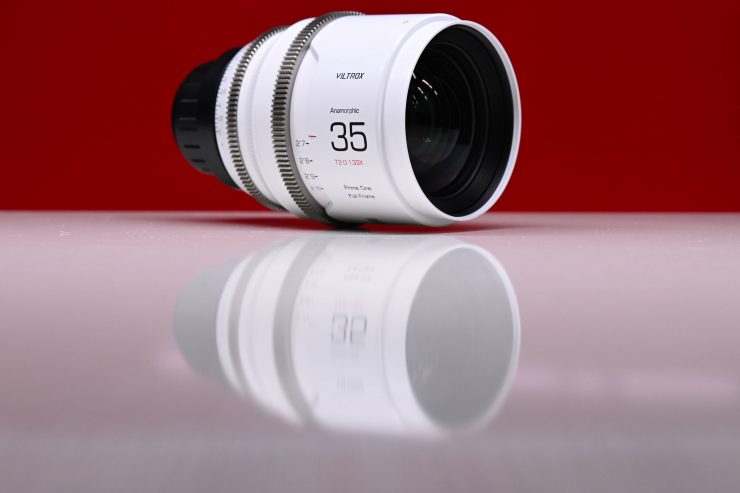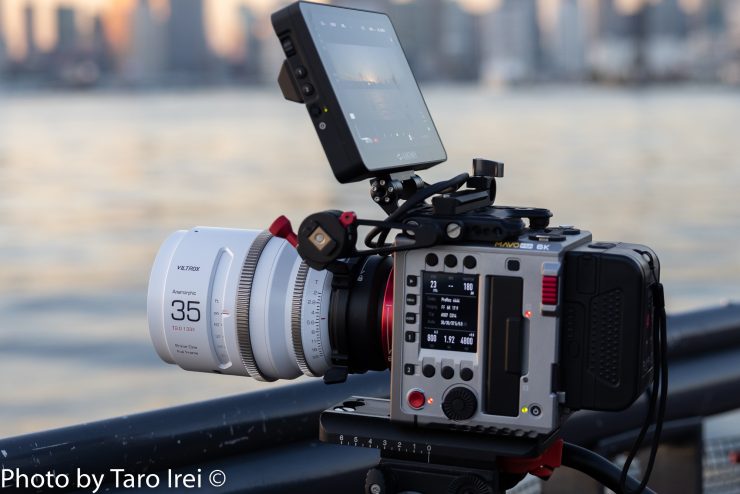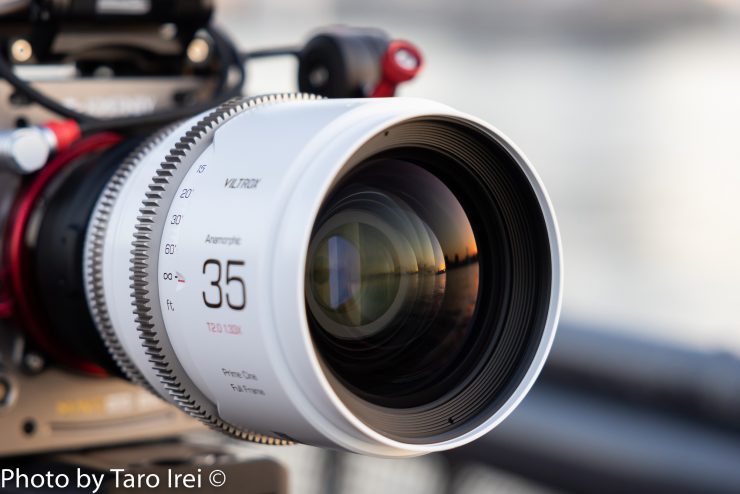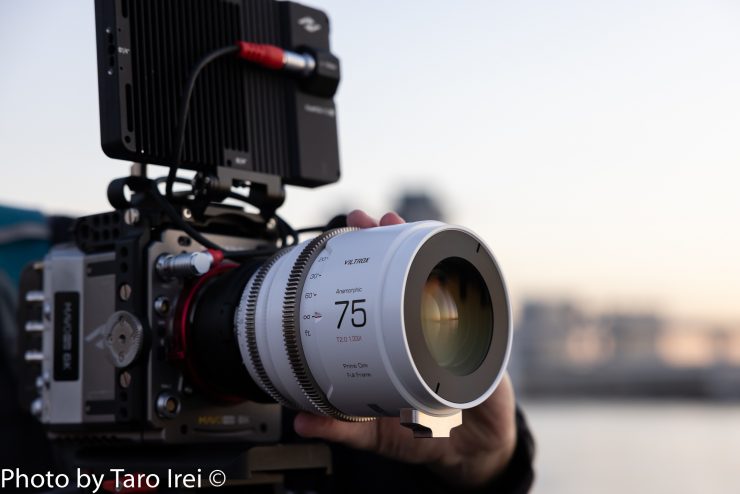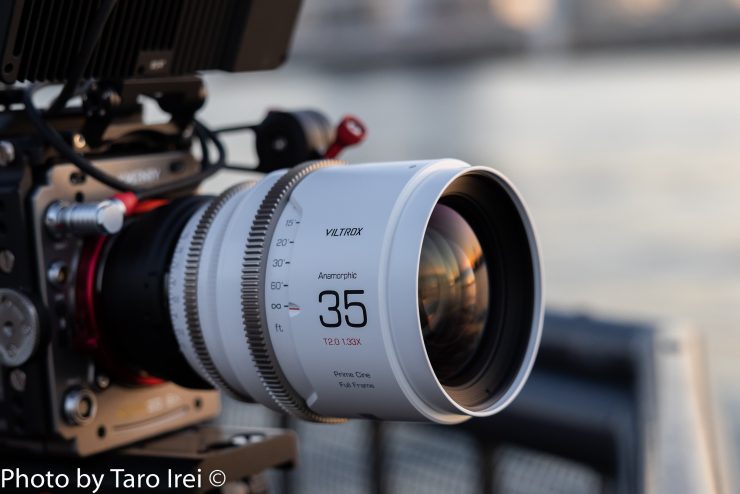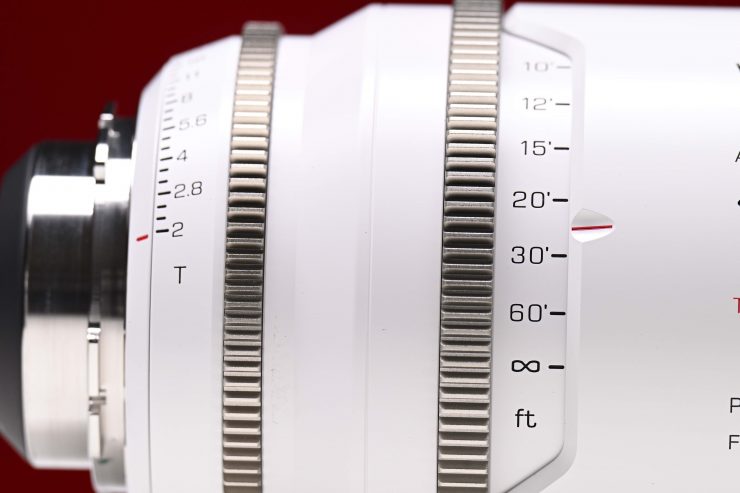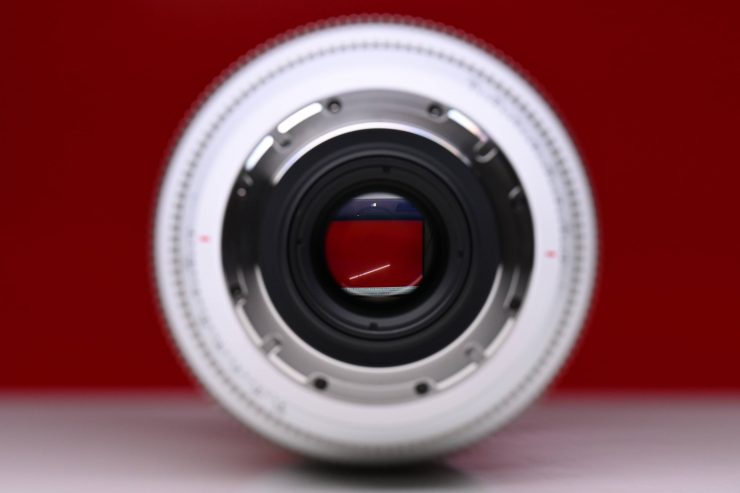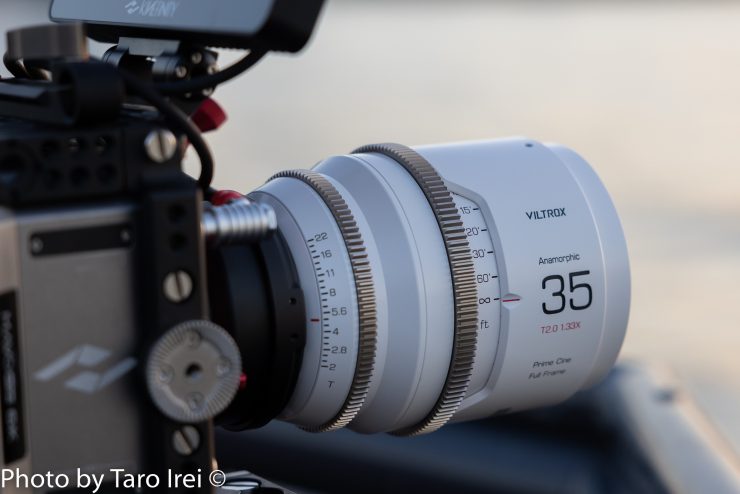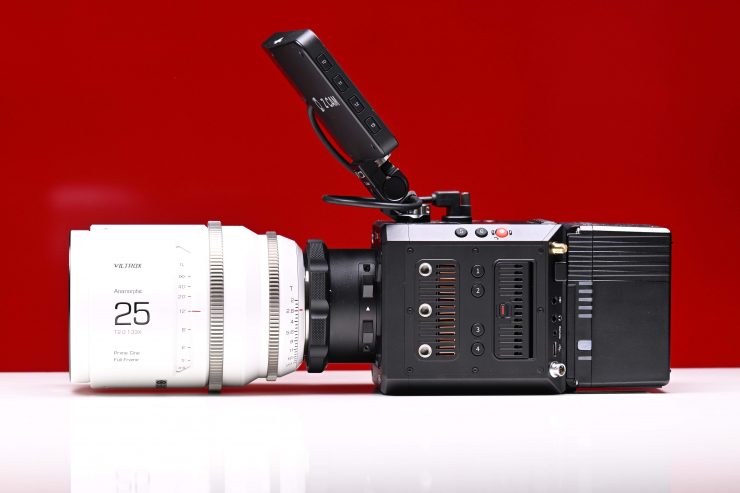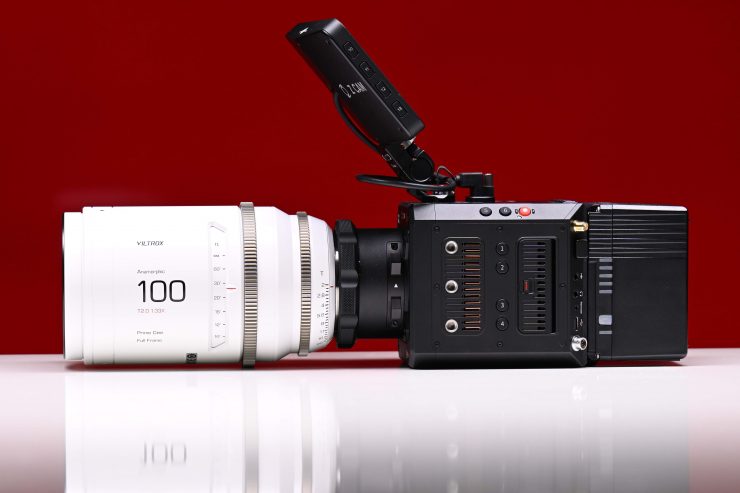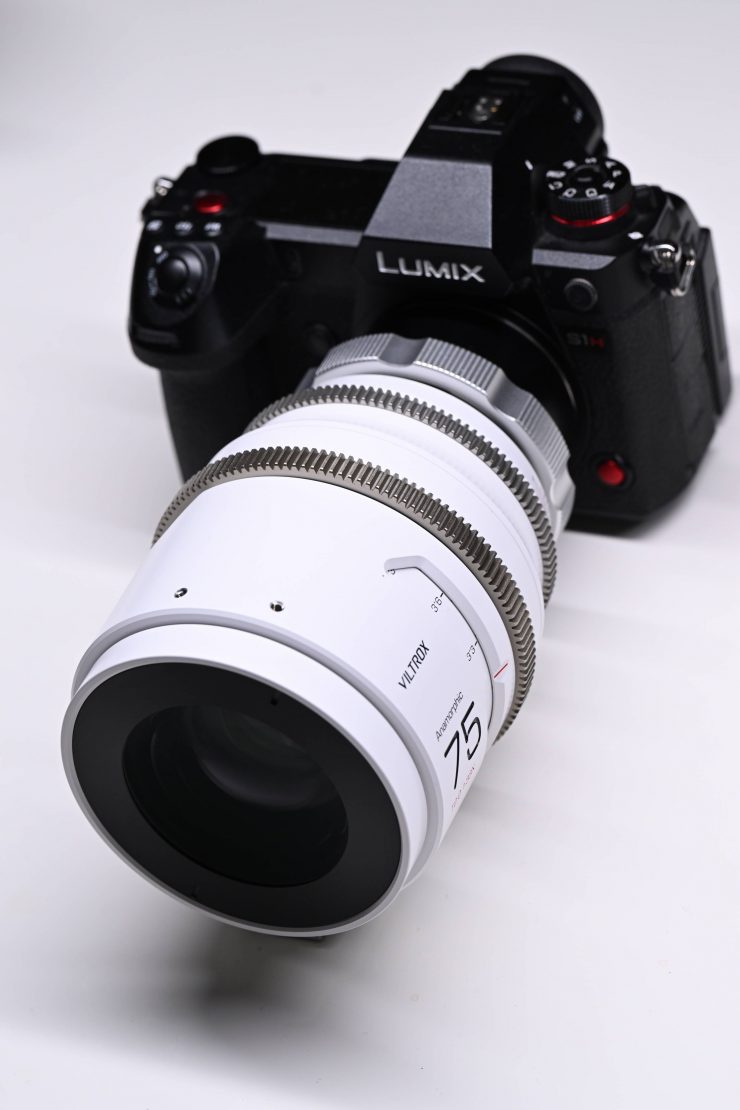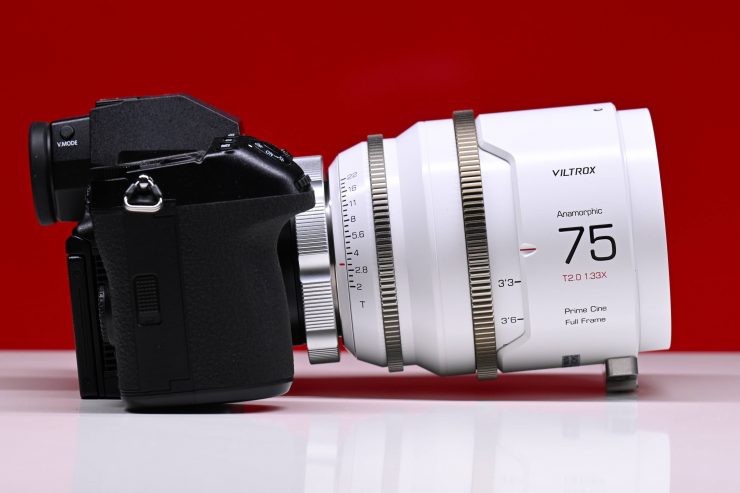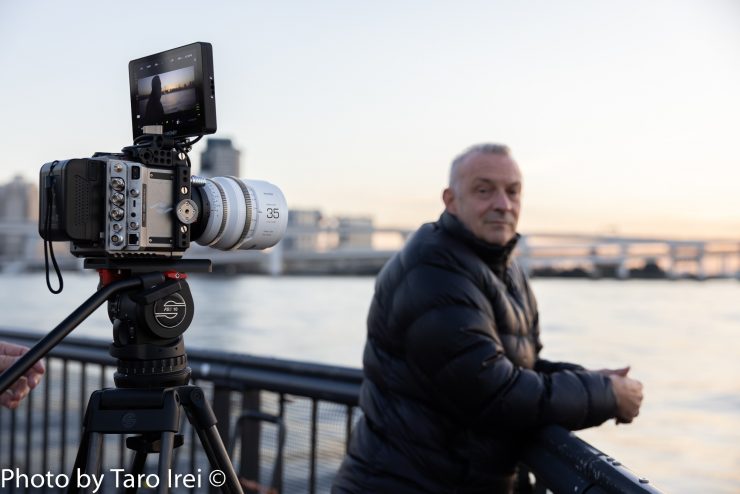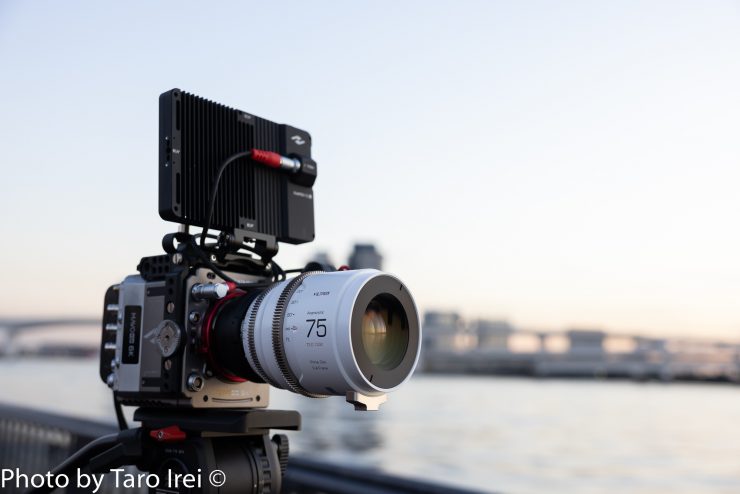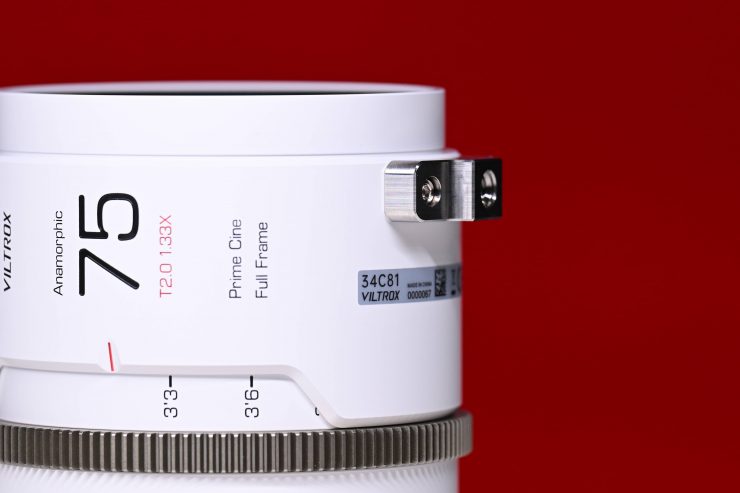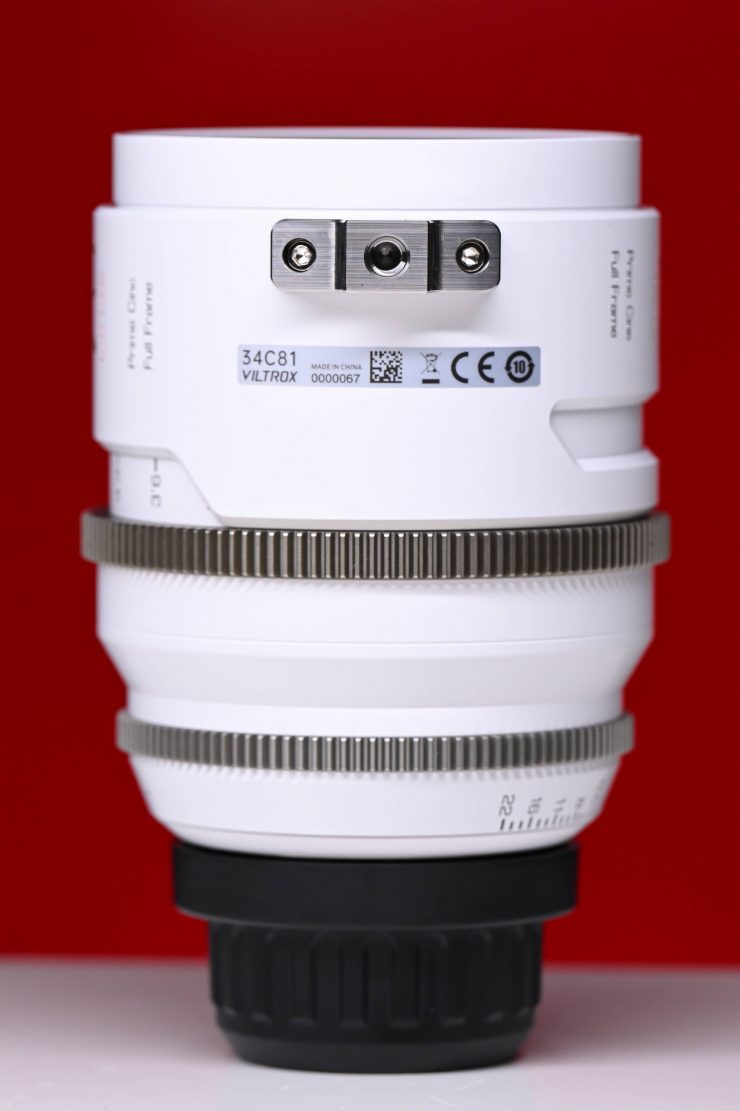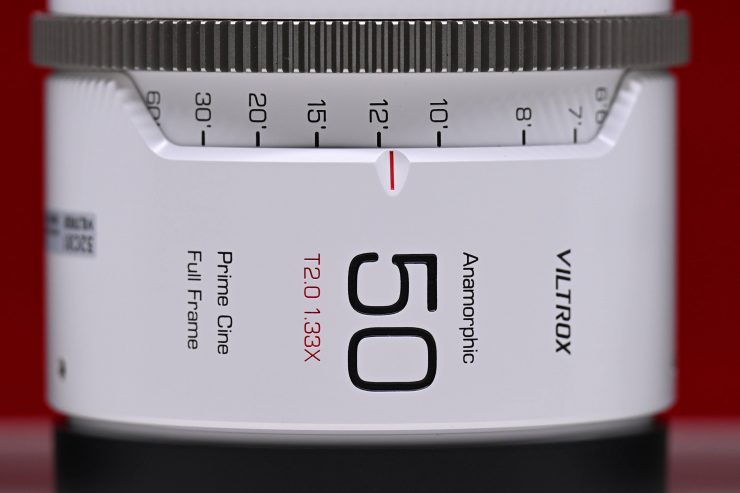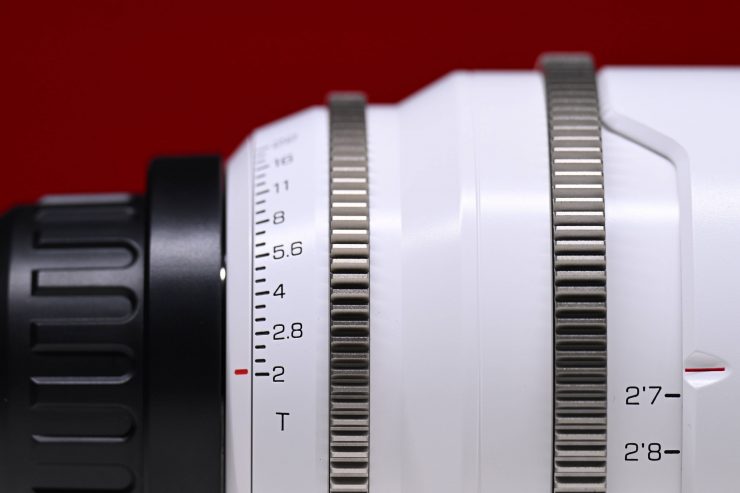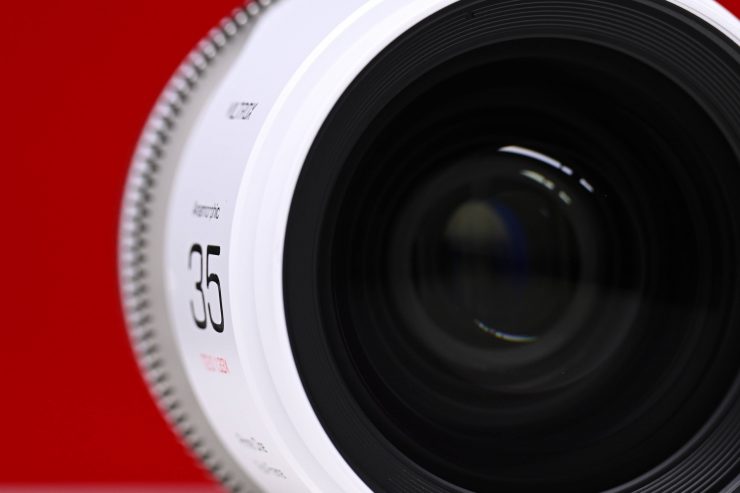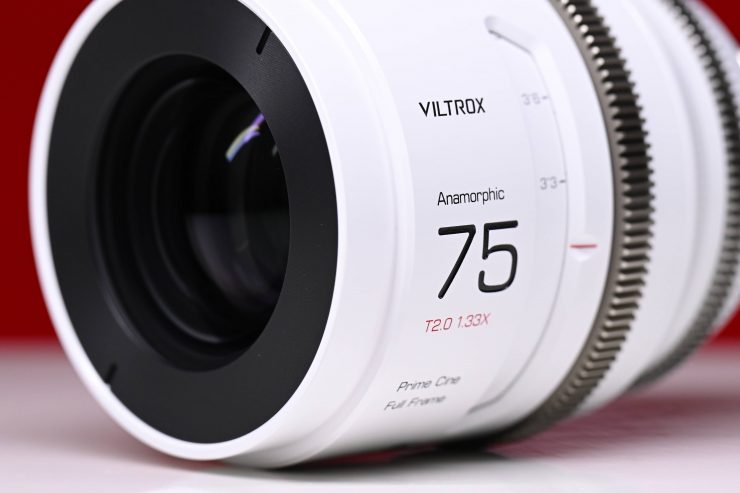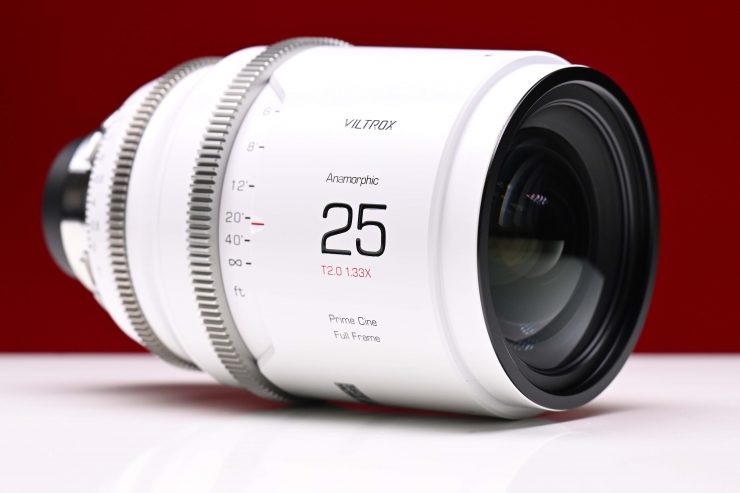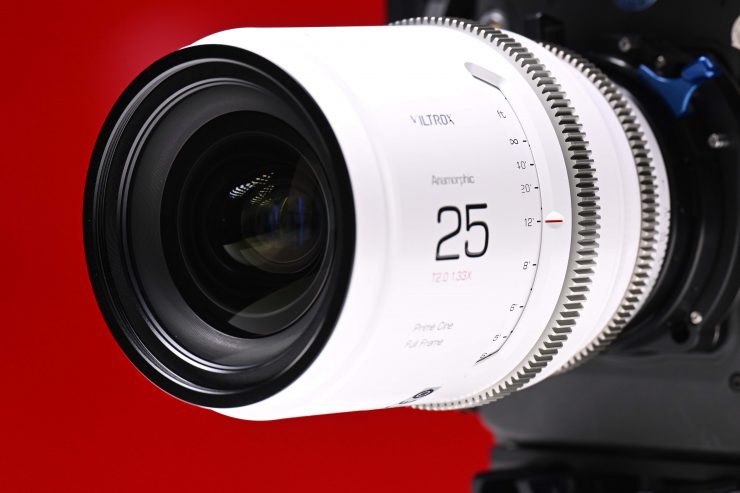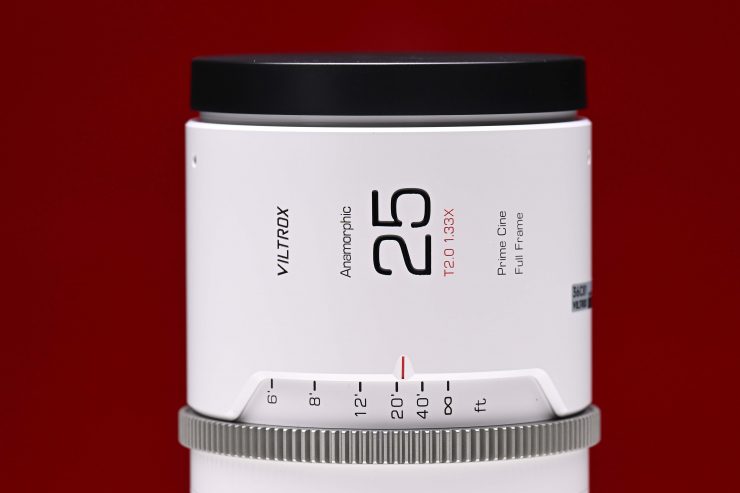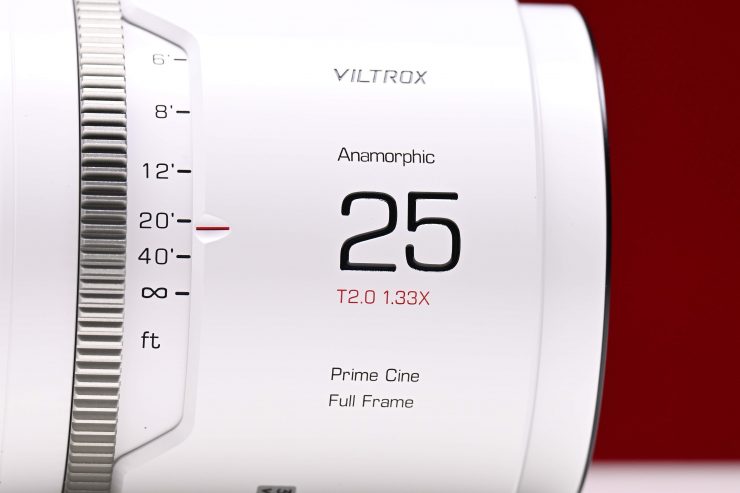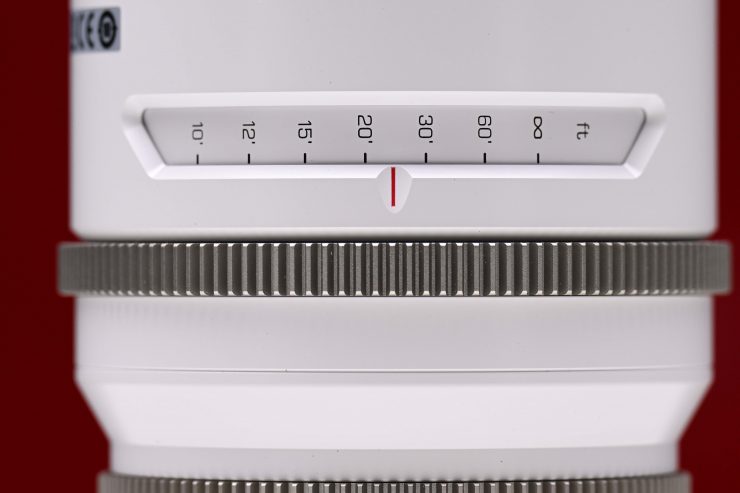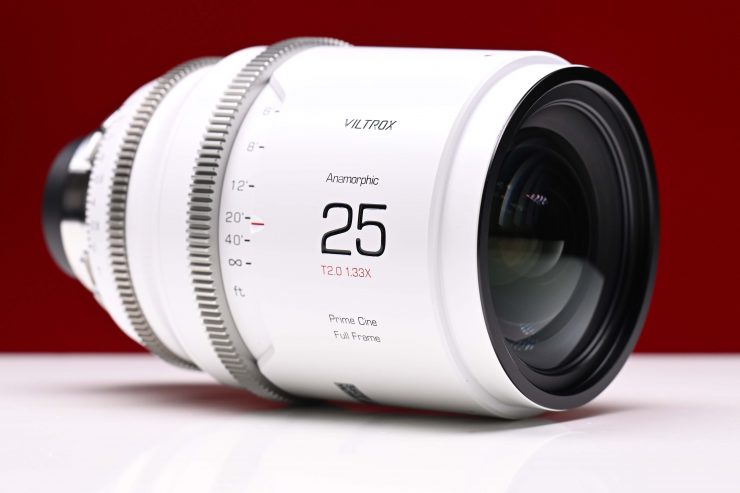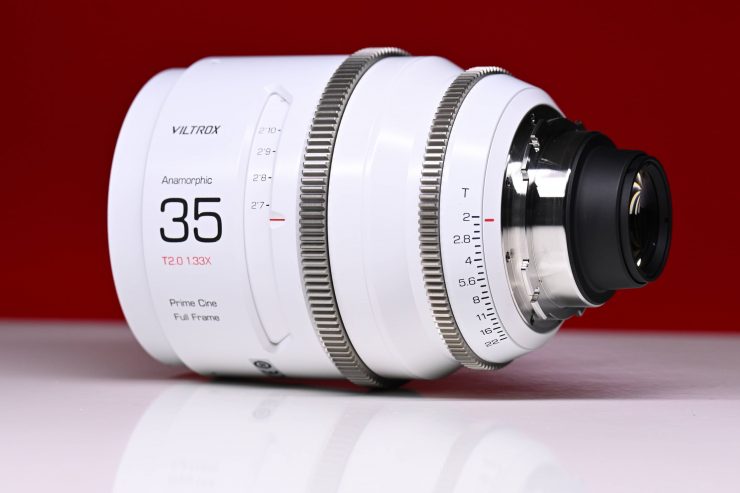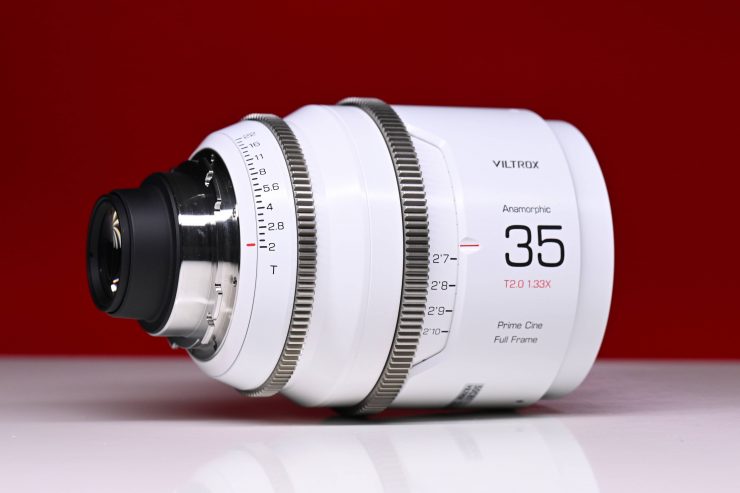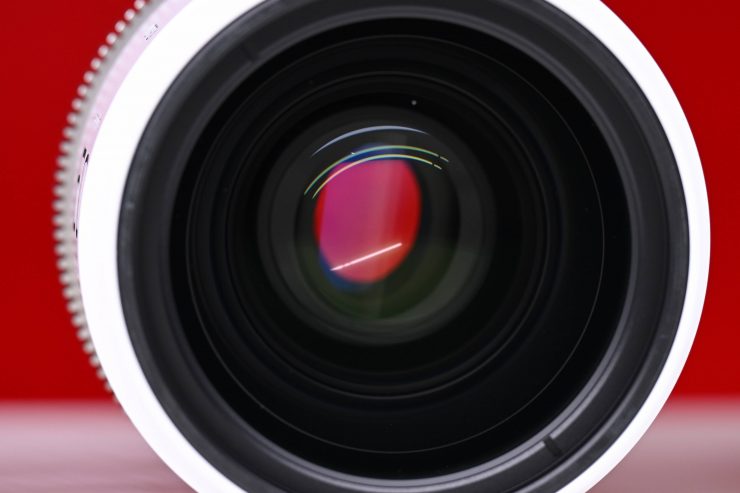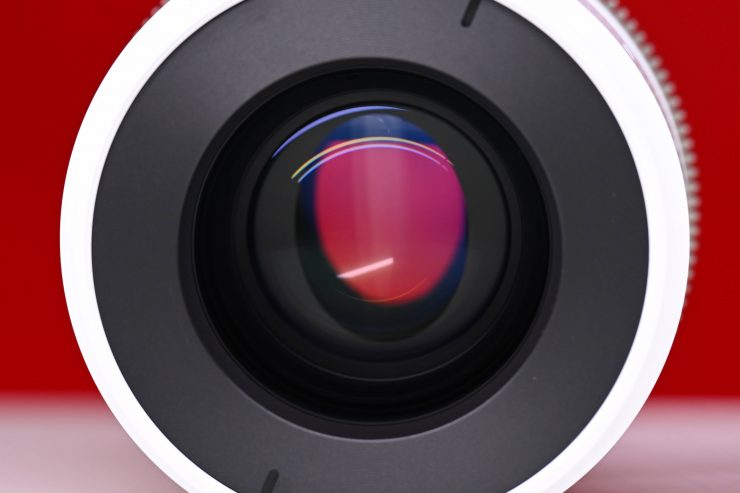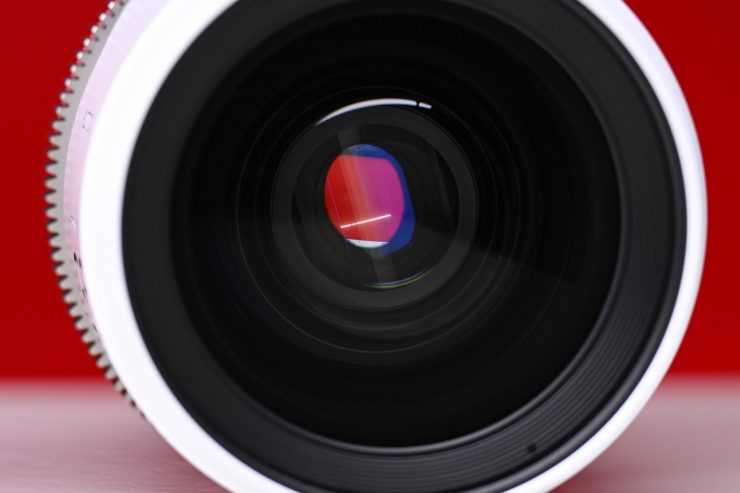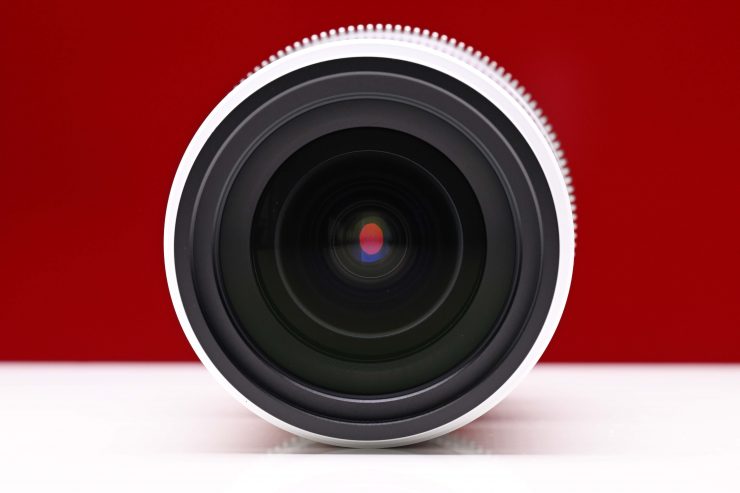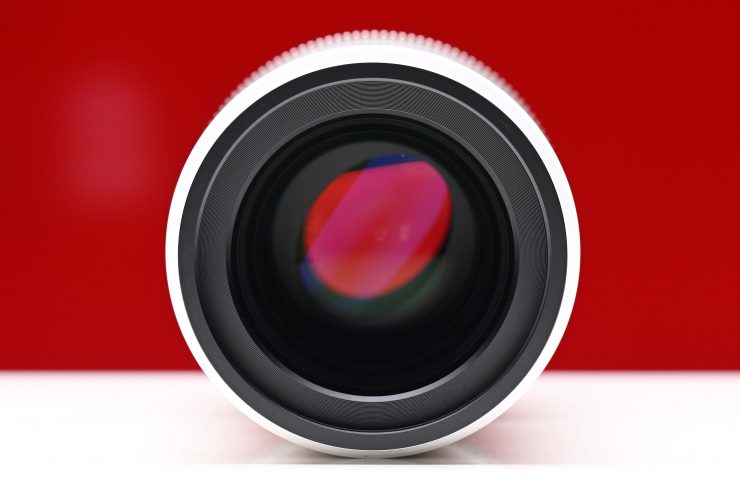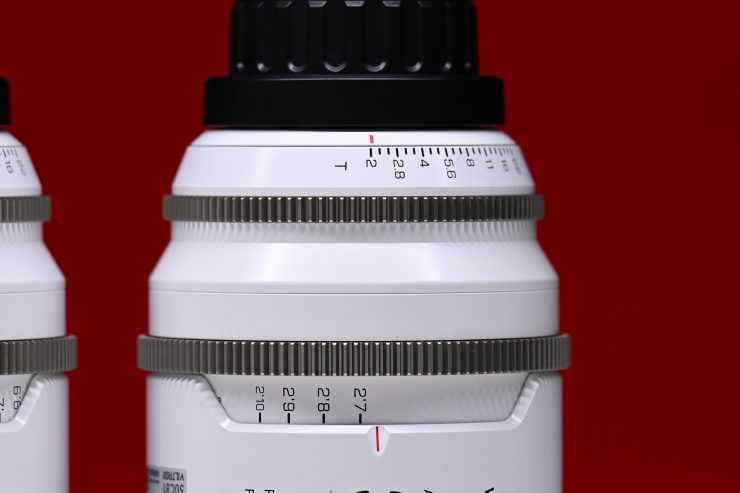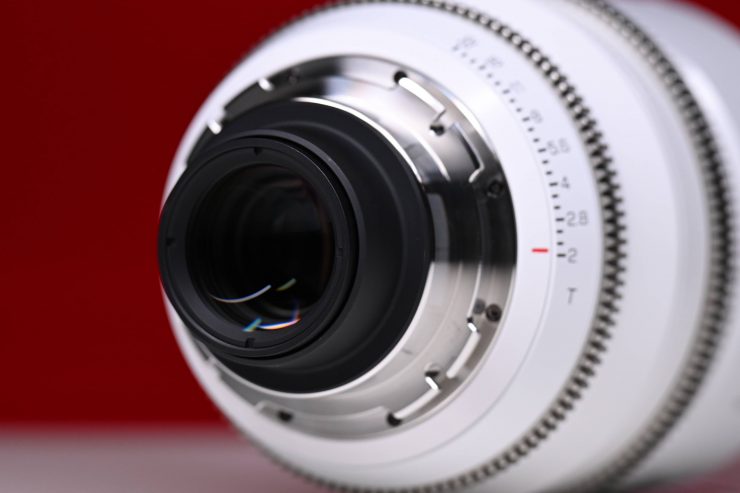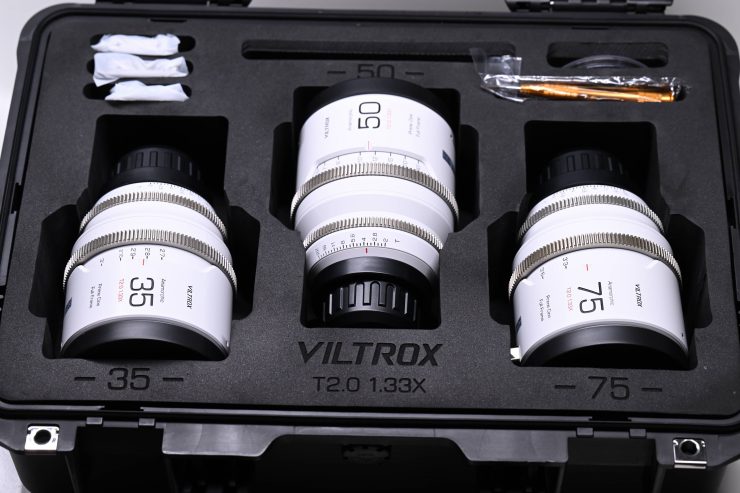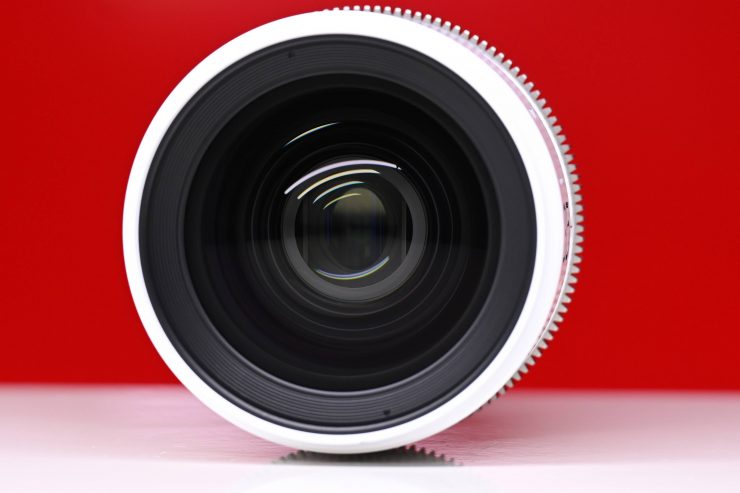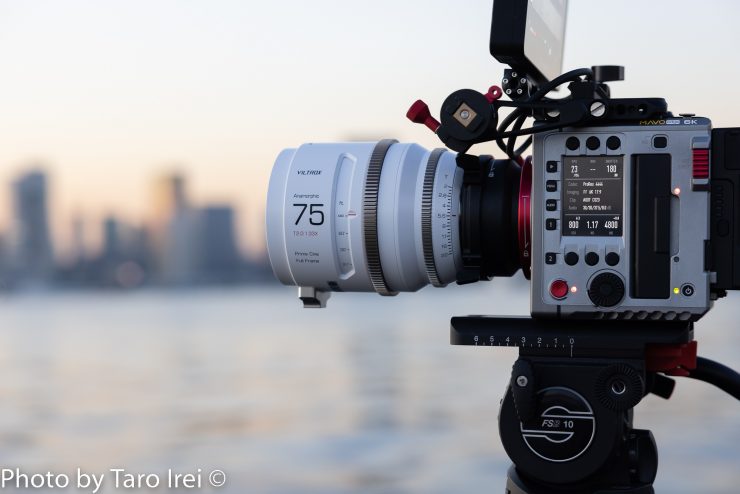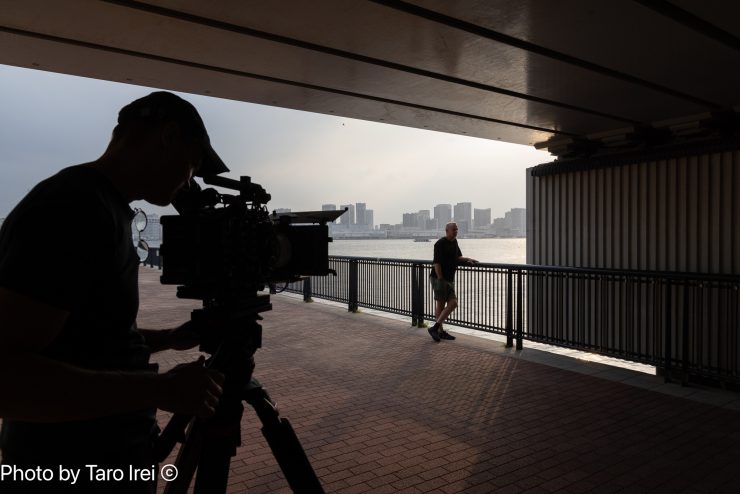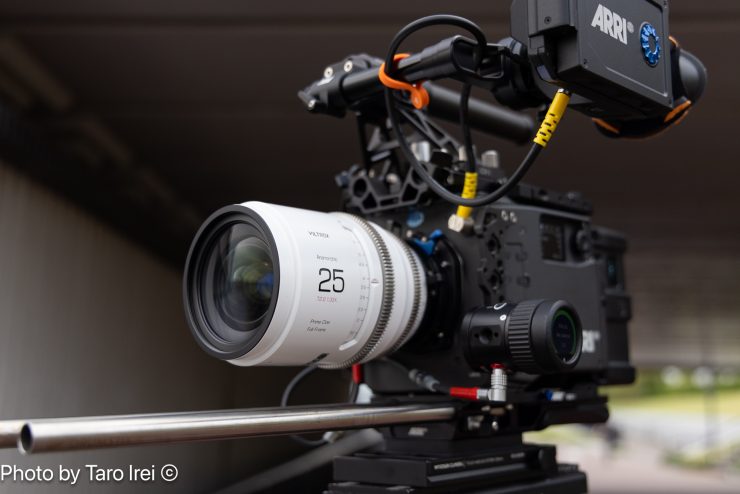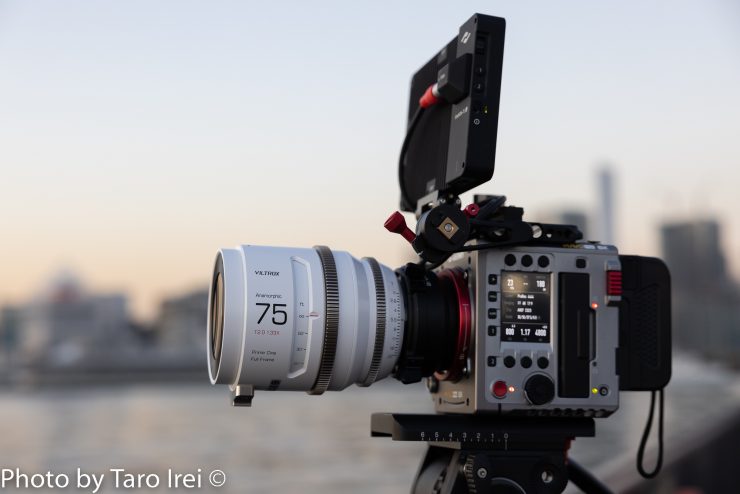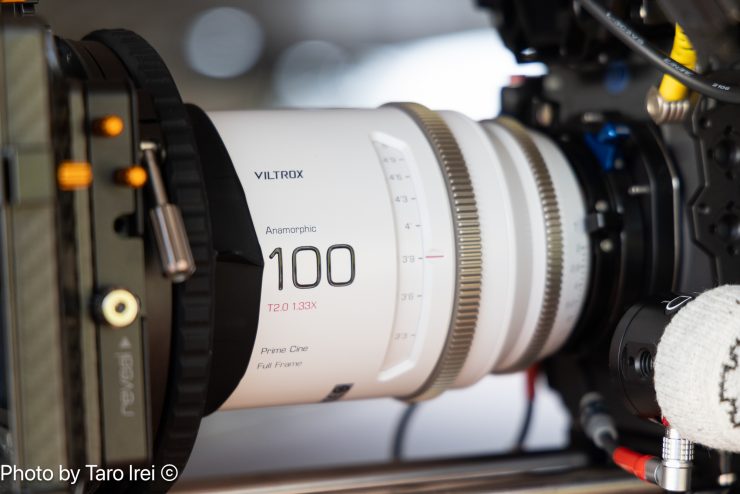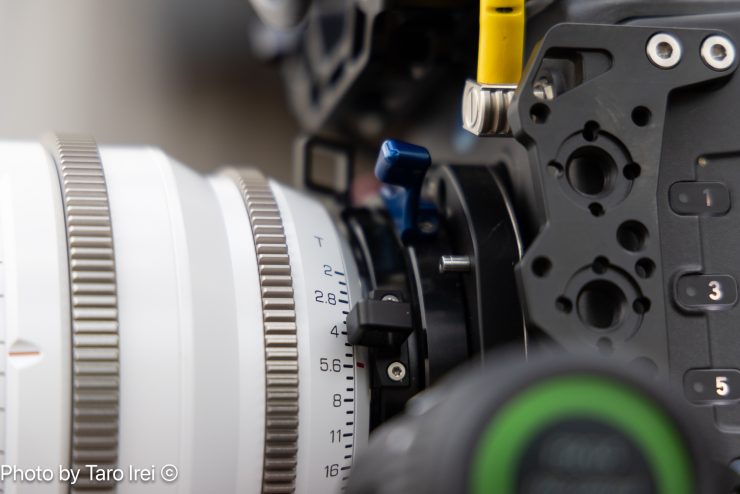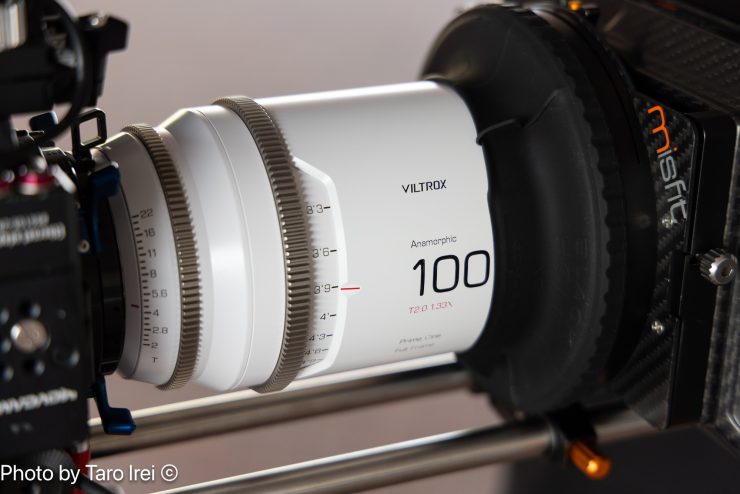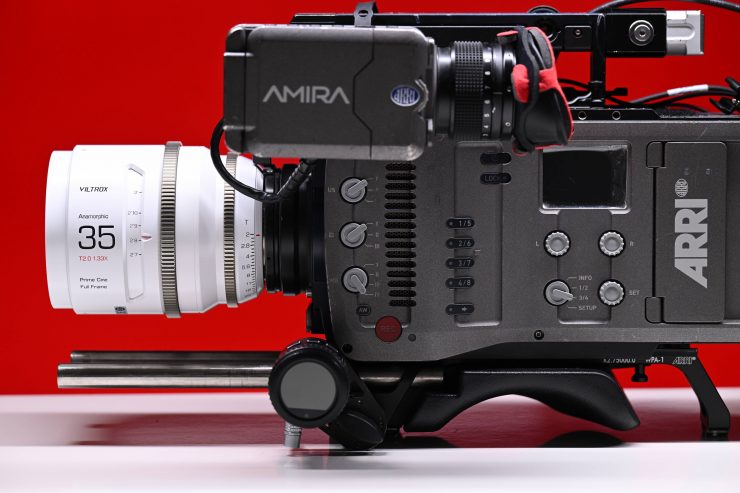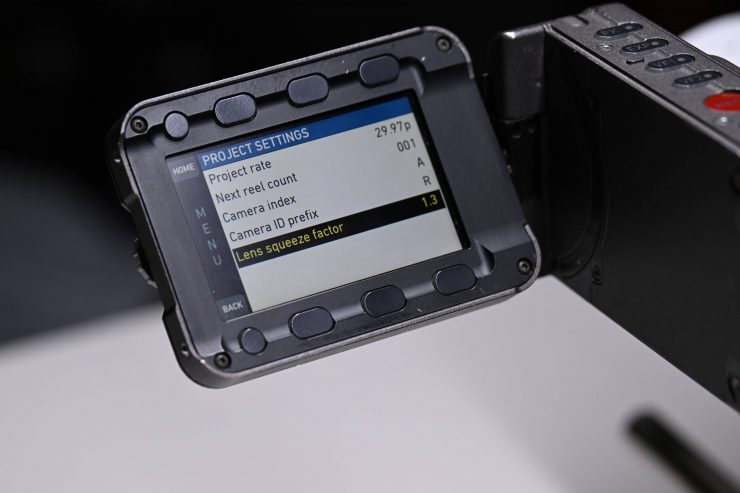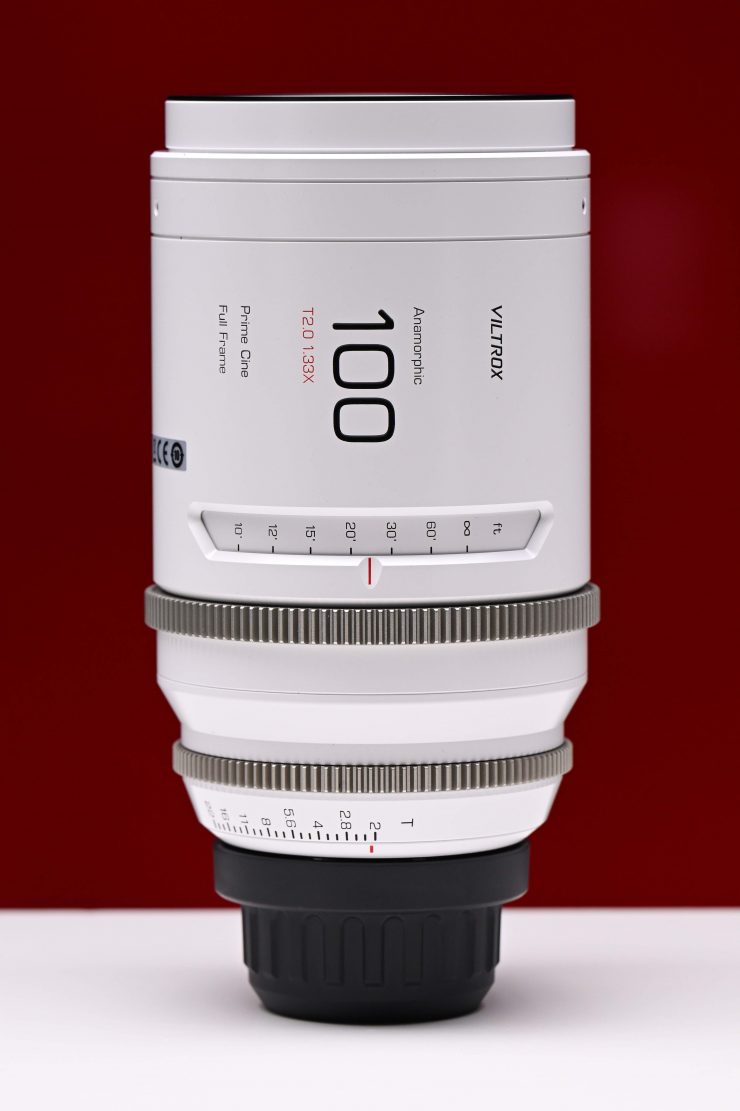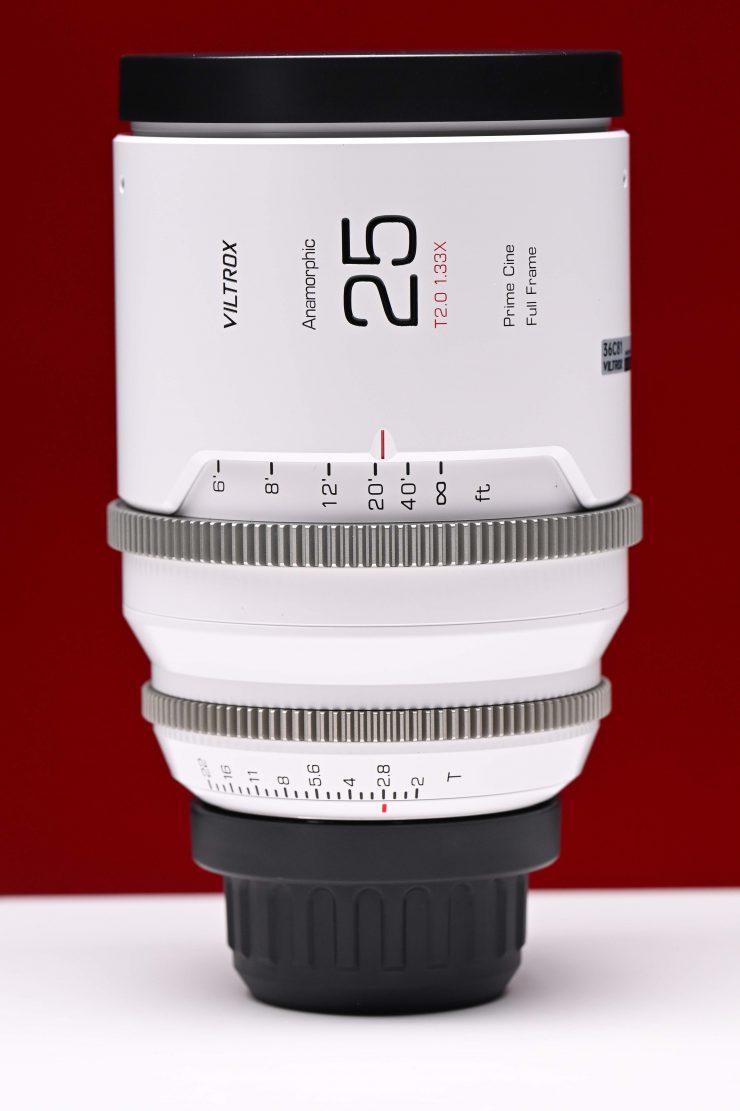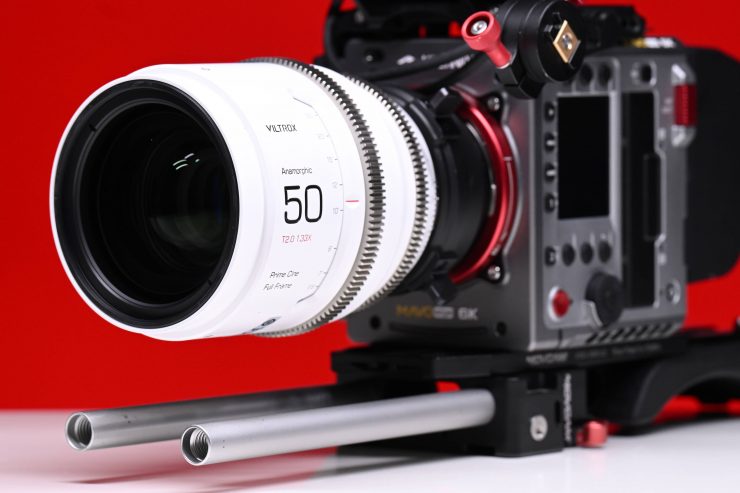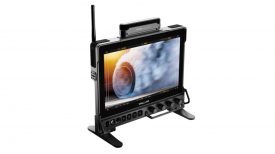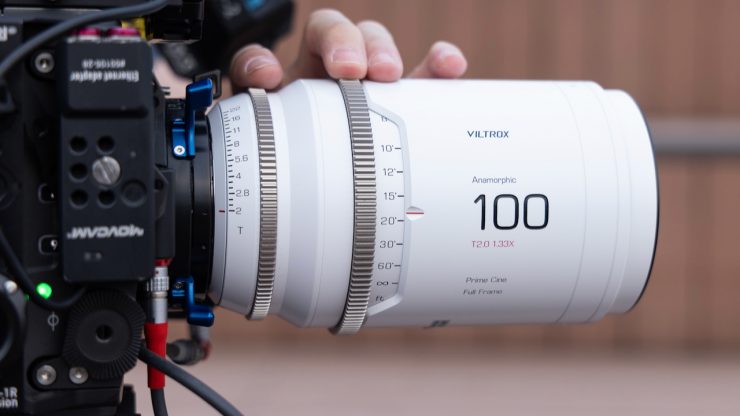
I first reviewed the Viltrox EPIC 1.33x Full Frame Anamorphic Lenses back in 2022, and recently the company announced two new focal lengths, the 100mm T2 & 25mm T2. These join the existing 35mm T2, 50mm T2, and 75mm T2 in the series.
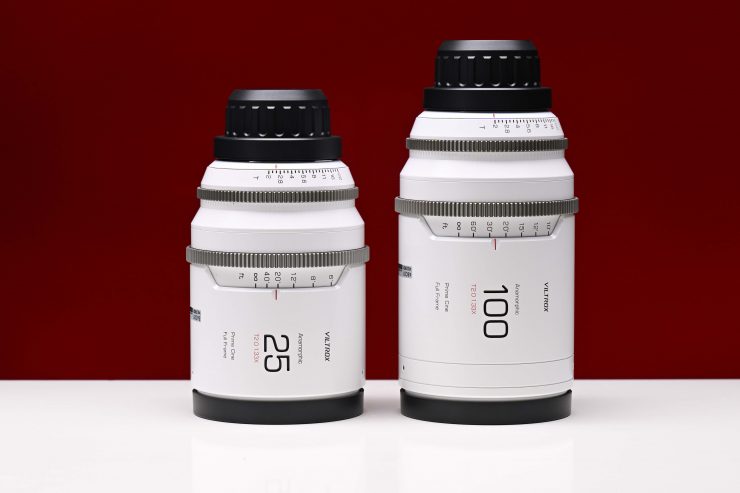
The Viltrox 1.33x Full Frame Anamorphic Lenses were designed to deliver a 2.39:1 aspect ratio from 16:9 cameras. This is useful if you want to shoot anamorphic with cameras that don’t have the ability to shoot in a 4:3 aspect ratio or open gate.
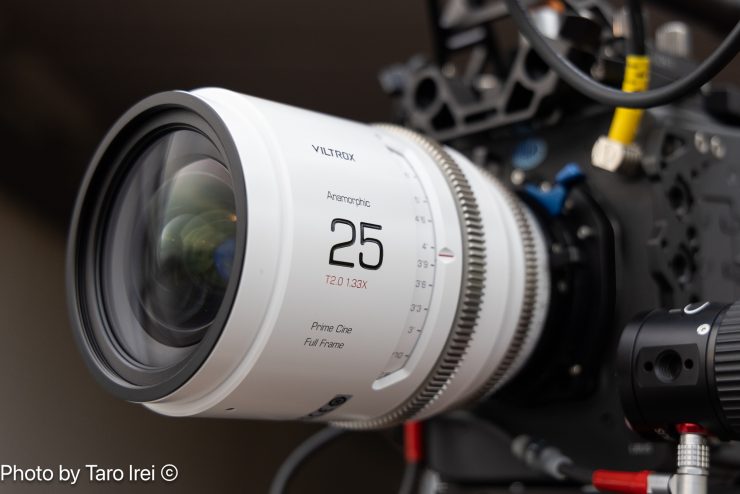
What sets the Viltrox lenses apart is that, at least to my knowledge, they are the only set of 1.33x anamorphic lenses that cover full frame on the market. Yes, the SLR Magic 1.33x Anamorphot-CINE 50mm T2.8 and 70mm T4 cover full frame, but the 35mm T2.4 doesn’t.
We have seen a lot of budget anamorphic lenses flood the market in the last year or so from companies such as Laowa, Vazen, and Great Joy (Blazar). This increased competition has certainly brought prices down and made anamorphic lenses more accessible to a wider audience.
Companies such as Laowa and Great Joy (Blazar) chose to adopt various squeeze ratios ranging from 1.5x up to 2x. A 1.5x squeeze design, for instance, balances the anamorphic characters as well as the resolution of the image. The 1.5x squeeze can produce a widescreen 2.39:1 aspect when paired up with 4:3 sensors. When paired up with 16:9 sensors, much less data (than 1.8x or 2x anamorphic lens) is needed to be cropped away to create the desired 2.39:1 ratio.
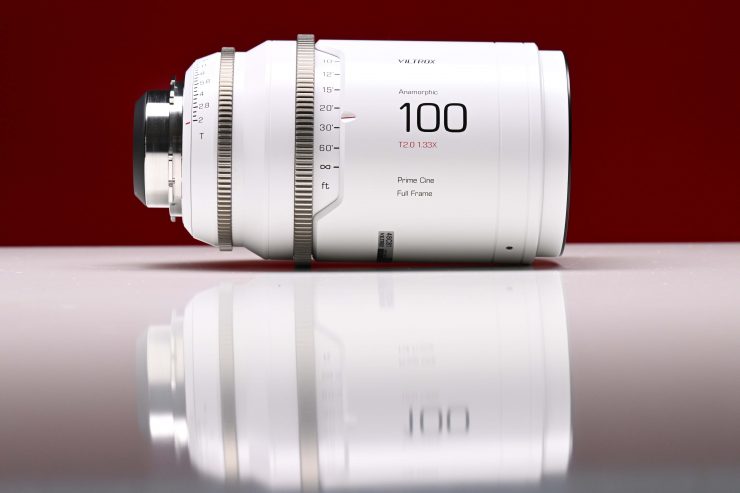
1.33x is less popular than 1.5x, 1.8x, or 2x as a lot of people feel that it doesn’t produce an image that they would categorize as having a strong anamorphic look.
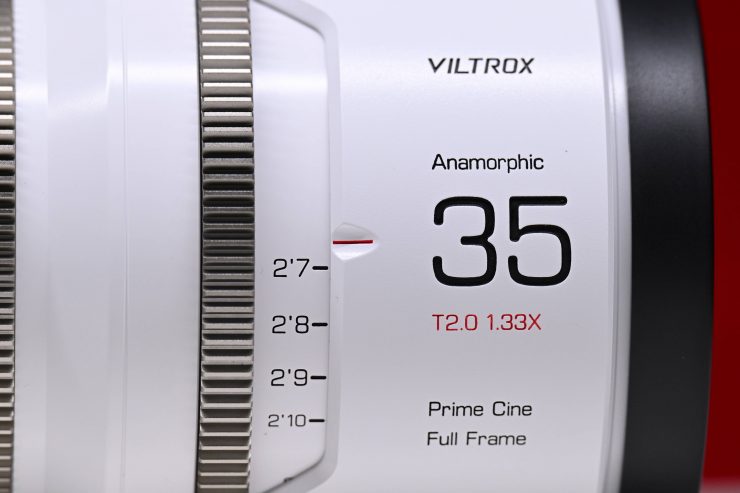
In a lot of ways, particularly for lenses at this price, Viltrox’s decision to go with a 1.33x anamorphic arguably makes a lot more sense than going with a 1.8x or 2x. I say this because 1.33x is more versatile and it allows the lens to be used on more cameras, although you could make that argument for 1.5x as well. Making a 1.33x anamorphic is also a lot easier than creating a 1.8x or 2x anamorphic and you don’t have to make as many optical compromises when designing a lens.
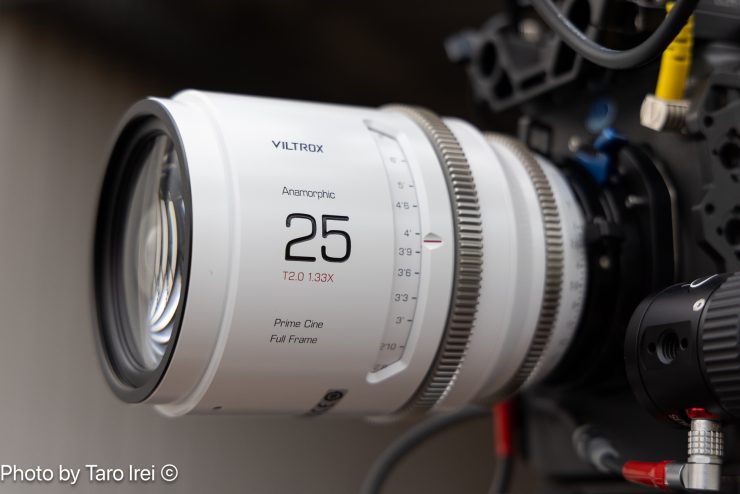
The Viltrox EPIC 1.33x Full Frame Anamorphic Lenses are going to have a lot cleaner look with far fewer optical abnormalities than most anamorphic lenses. There is absolutely nothing wrong with choosing cleaner lenses because sometimes you don’t want all of the associated characteristics that come with using vintage or certain anamorphic lenses.
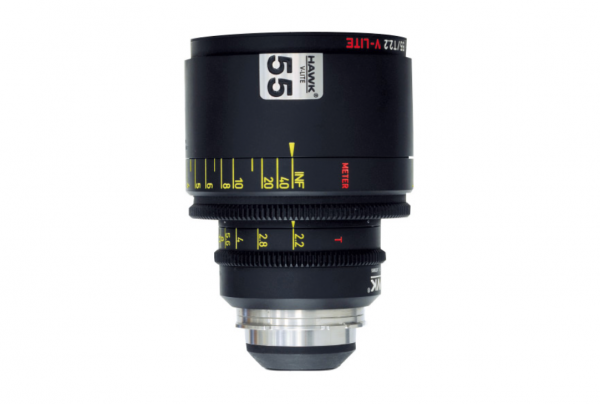
When we usually think about anamorphic lenses we think of lenses that are 1.5x, 1.8x or 2x, and not 1.33x. There are very few 1.33x anamorphic lenses on the market, except for the SIRUI 1.33x, SLR Magic 1.33x Anamorphot-CINE, and the Hawk 1.3x (which are very expensive), but none of those options completely cover full frame. The SLR Magic 1.33x Anamorphot-CINE 50 and 75mm do cover full frame, but the 35 does not.
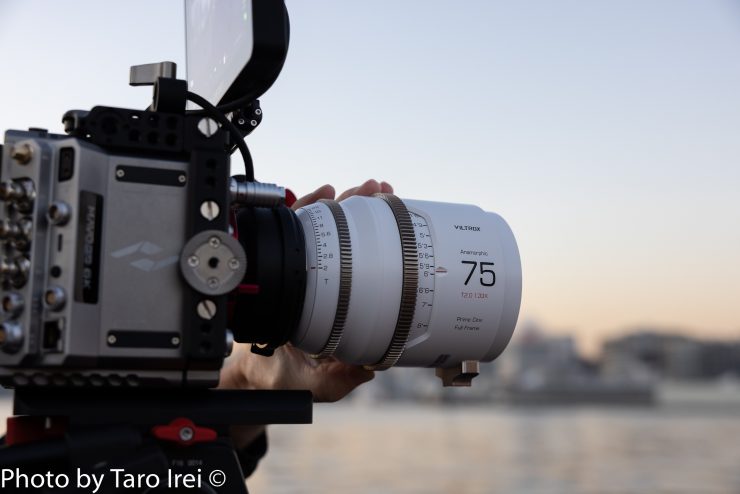
As you can use the Viltrox EPIC 1.33x Full Frame Anamorphic Lenses on any 16:9 sensor camera regardless of whether it is full frame or S35 they are a very versatile solution.
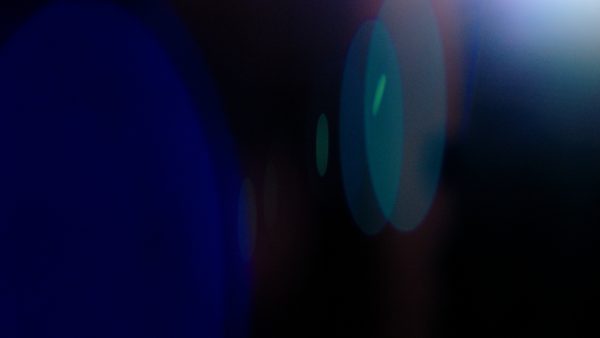
Unlike spherical lenses that project images onto the sensor without affecting the aspect ratio, anamorphic lenses project a version of the image that is compressed along the longer dimension (by a factor of 2, or in the case of the Viltrox, a factor of 1.33). This means that the image requires stretching, later on, to be displayed correctly. A lot of today’s monitors and EVFs have the ability to de-squeeze an anamorphic image, so you can view it correctly when you are shooting. There are also more and more cameras that also have dedicated anamorphic recording modes.
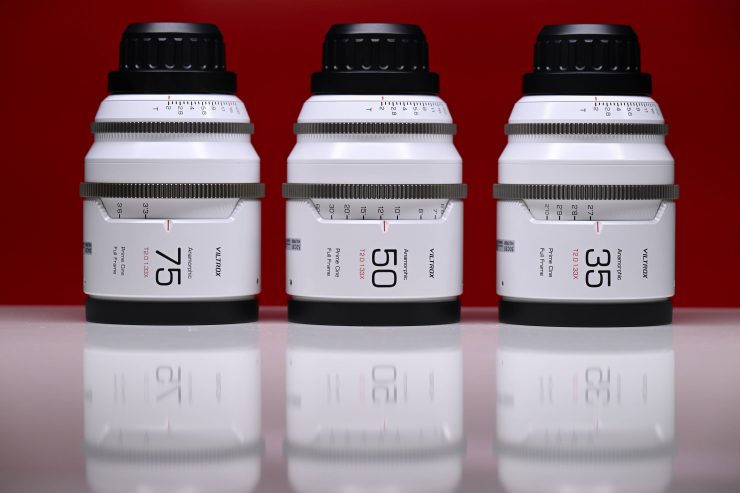
The Viltrox 1.33x Full Frame series are complete, one-piece, anamorphic lenses. The lenses come in focal lengths of 25mm T2, 35mm T2, 50mm T2, 75mm T2, and 100mm T2.
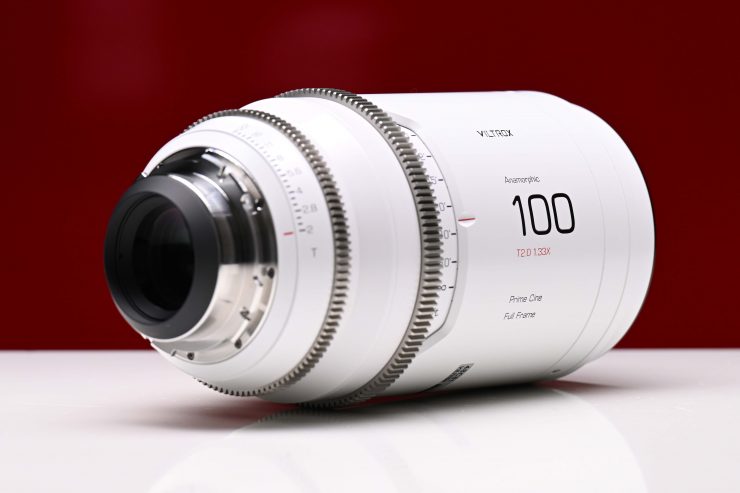
The lenses are suitable for use with cameras that have a full frame or S35 sensor, and they allow you to record an image with a wider aspect ratio than your sensor’s native aspect ratio without cropping your image. As you aren’t cropping into your image, this helps to maximize the resolution you can obtain.
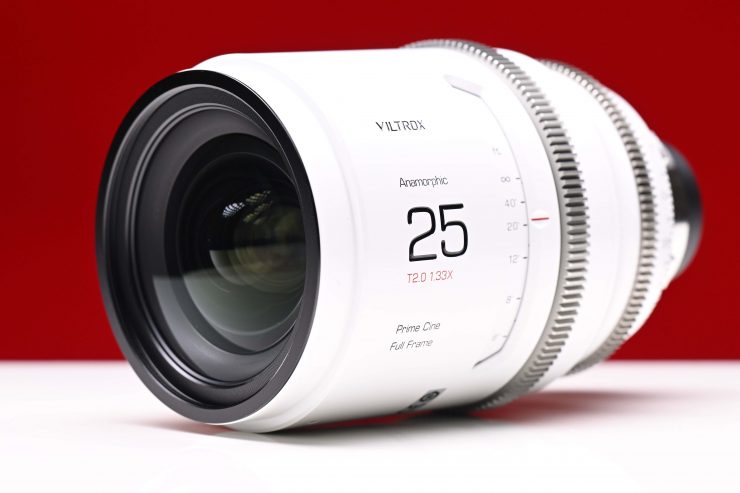
The lenses have geared focus and iris rings, and a 95mm front diameter.
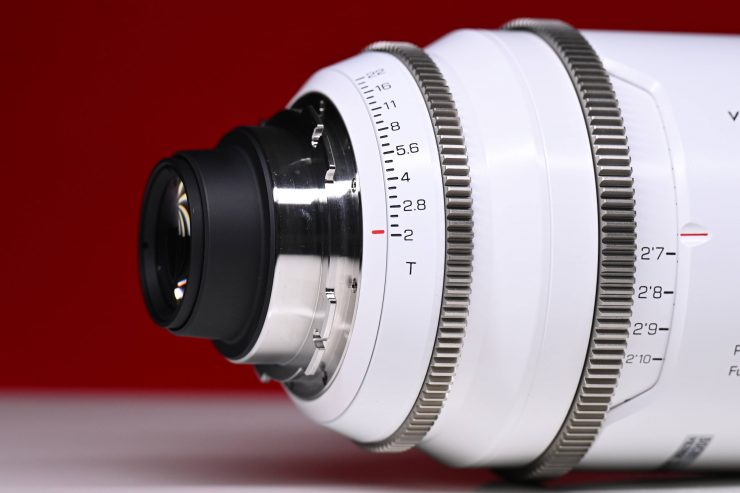
The geared focus and iris rings allow you to use follow focus units or lens motors.
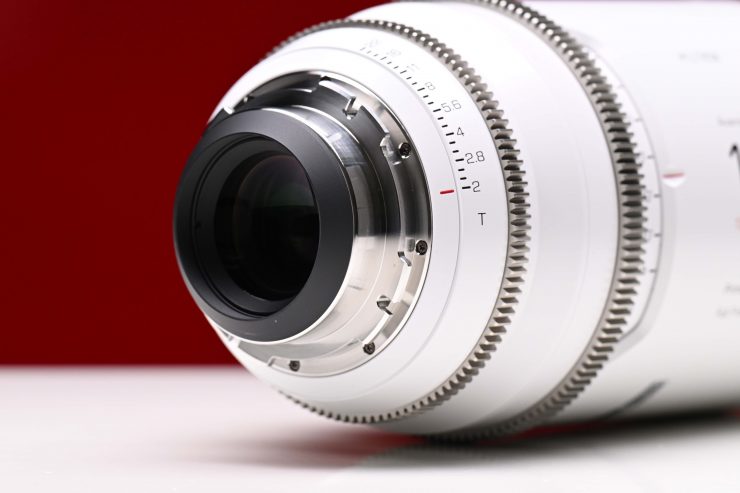
They are available in Sony E, Nikon Z, Leica L, or PL mount. The mounts are also interchangeable which is a nice touch.
Anamorphic & affordable didn’t use to go in the same sentence
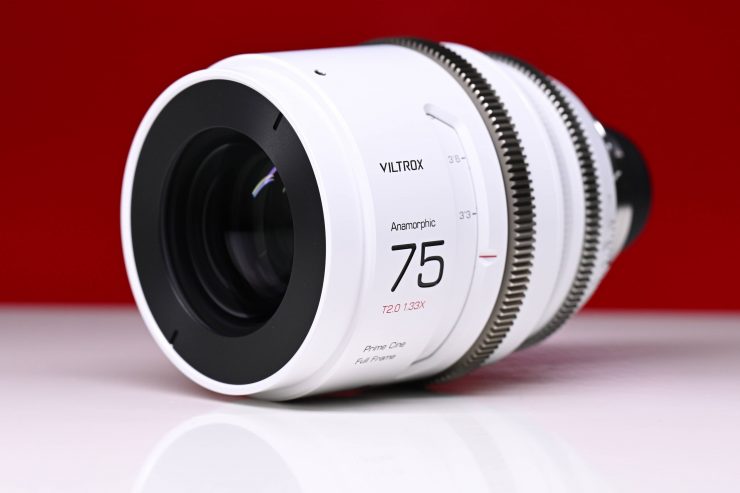
Anamorphic lenses have historically been expensive and out of reach for a lot of shooters, but times have changed. We now have a myriad of affordable options in different squeeze ratios hitting the market from companies such as Laowa, Vazen, Great Joy (Blazar), SIRUI, etc.
At between $3,299 USD and $3,999 USD each, the Viltrox 1.33x Full Frame Anamorphic Lenses are more expensive than a lot of the budget offerings that have a 1.5x, 1.8x, or 2x squeeze. However, they are a lot more affordable than lenses like the Hawk V-Lite anamorphic. Even the SLR Magic 1.33x Anamorphot-CINE Lenses are more expensive than the Viltrox. You could dive into the second-hand market to try and find a bargain, but good luck. Even second-hand Lomo, Kowa, Canon, and Cooke anamorphic lenses are generally going to be out of reach.
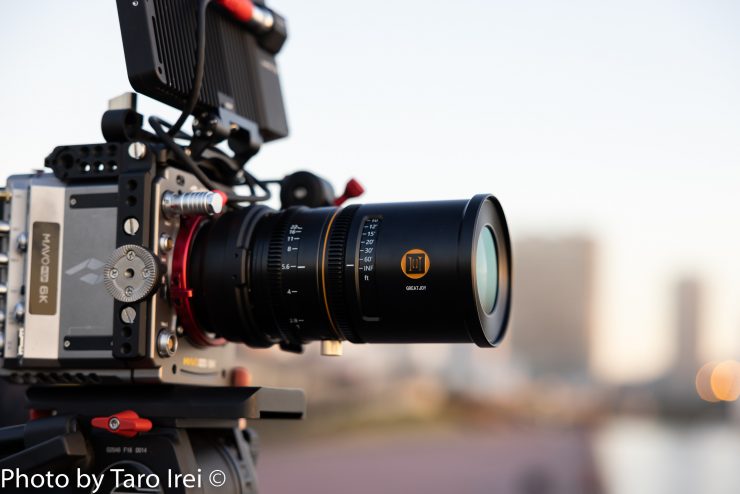
Lenses such as the Great Joy 1.8x full frame anamorphic lenses, and the upcoming Blazar Cato 2x Anamorphic series are extremely affordable, but they are designed to be used on cameras that have 4:3 sensors and open gate sensor modes.
Who are these lenses aimed at?
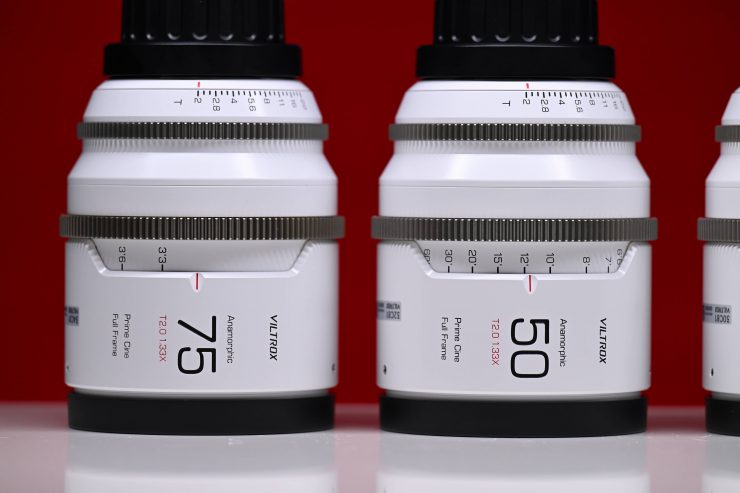
I was interested to find out who Viltrox was targeting with these lenses so I reached out to ask them. They told me that the 1.33x Full Frame Anamorphic lenses are being targeted at the TV/Film and advertising market.
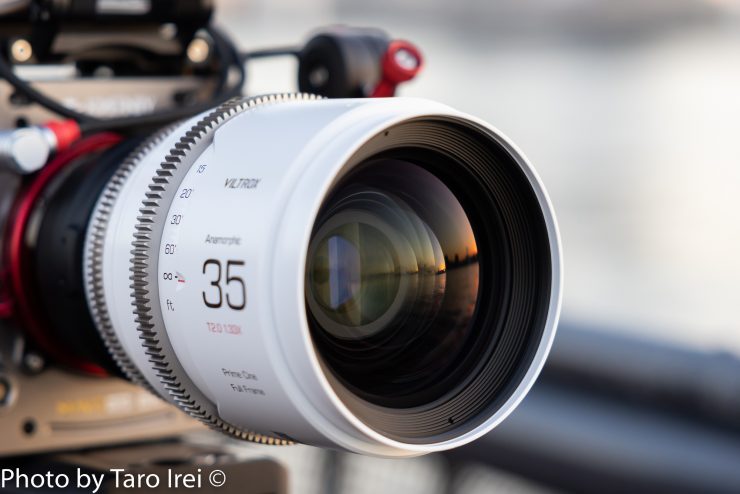
At least, in my opinion, it is best to think of a 1.33x lens as a middle ground between a spherical and an anamorphic lens with a higher squeeze ratio. 1.33x isn’t going to give you a very ‘anamorphic’ look, but it will offer enough character to make it different from shooting with a spherical lens. I think that Viltrox is hoping that the 1.33x Full Frame Anamorphic lenses offer something that is a little different from what else is on the market.
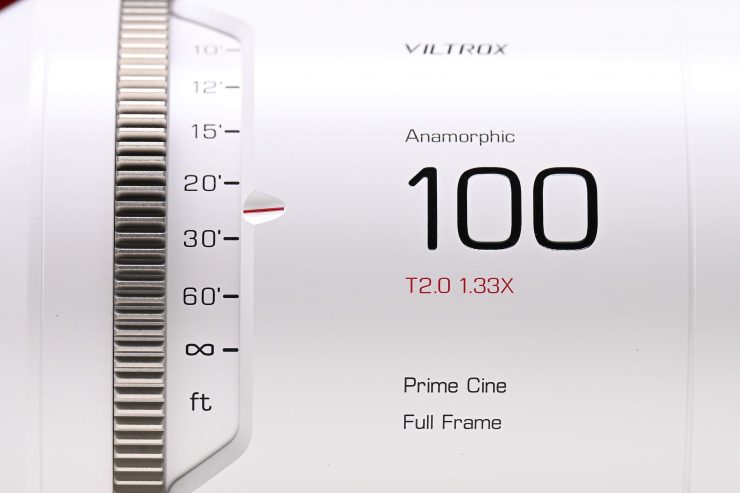
In some ways, you may think that 1.33x is a strange choice, but the reason for going with this squeeze ratio is that you can use the lenses on just about any camera. You don’t need a camera with a 4:3 sensor or a camera that can shoot in anamorphic recording modes. 1.33x will give you that 2.39:1 aspect ratio without throwing away resolution. As I mentioned earlier in the review, the other reason is that it is easier and cheaper to make a 1.33x full frame lens than a 1.5/1.8 or 2x. Viltrox has also been able to make the lenses all T2. This would have been a lot harder to do if they chose to go with a 1.5/1.8, or 2x squeeze. With most other budget anamorphic lenses, the T stops vary across the focal ranges.
Why were anamorphic lenses made?
What you may not know is that anamorphosing optics was developed by Henri Chrétien during World War I to provide a wide-angle viewer for military tanks. The optical process was called Hypergonar by Chrétien and was capable of showing a field of view of 180 degrees. After the war, anamorphic lenses for cinema were originally designed so that wide format imagery would fully utilize the film area of a standard 35 mm frame. The lenses also enhanced vertical resolution and reduced the appearance of grain. The technology was first used in a cinematic context in the short film Construire un Feu in 1927 by Claude Autant-Lara. The introduction of the Super 35mm format made the difference between anamorphic and spherical lenses a lot less obvious. This is because Super 35 provided more horizontal film area, as it didn’t have to record the audio next to each frame, as was the case with standard 35mm film.
Why shoot anamorphic?
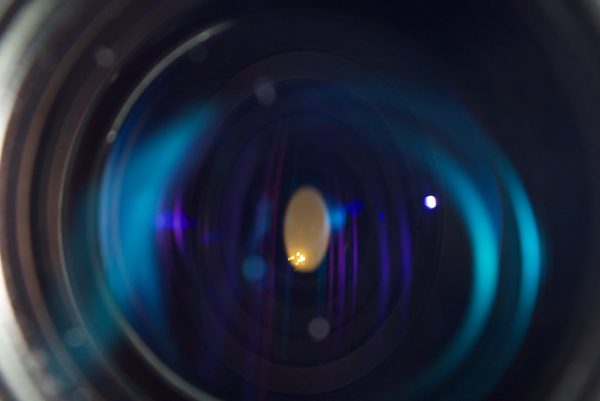
With a lot of anamorphic lenses, you are going to see image imperfections, but this is what makes anamorphic lenses so special. With modern-day cameras and sensors being so good, a lot of DPs want to try and add character through the use of vintage and anamorphic lenses. Image characteristics when shooting with an anamorphic lens include the bokeh taking on the appearance of being oval-shaped as opposed to circular, and flares appear as bluish horizontal or vertical streaks that can span across the entire picture. The other characteristic associated with anamorphic shooting is the widescreen aspect ratio.
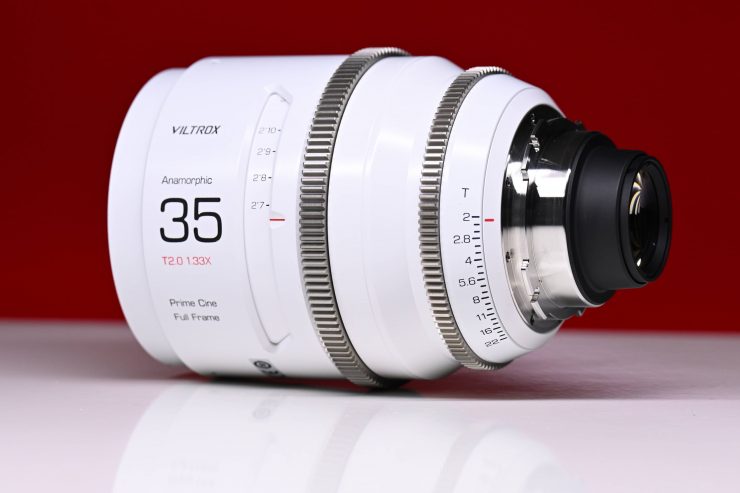
If you are working in HD or 2K formats with spherical lenses, you could just crop your 2K frame to get a 2.39:1 ratio, right? Yes, you could, but the problem is you are left with just 858 lines of vertical resolution. Anamorphic lenses provide a way to capture a 2.39:1 ratio without having to make that sacrifice in resolution. Of course, you can also capture at higher resolutions (4K, 6K, 8K, etc.) and then deliver in a lower resolution as well.
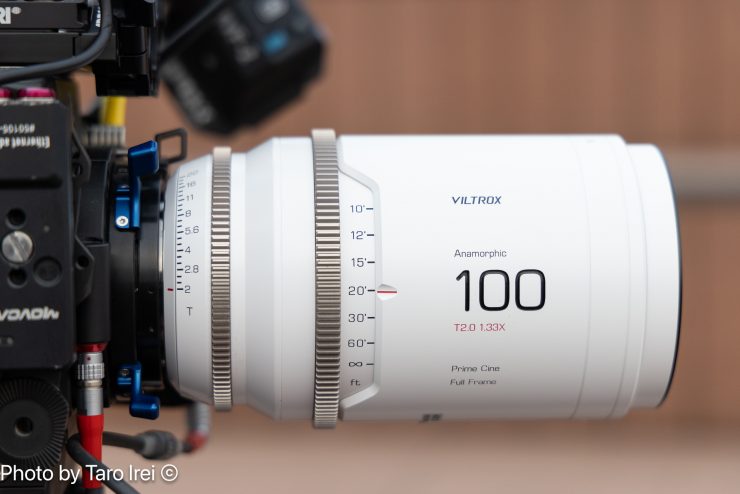
2x anamorphic lenses produce a super-wide 3.55:1 ratio. To produce a traditional 2.39:1 ratio with a 16:9 sensor, a 1.33x or 1.35x anamorphic lens is needed.
Anamorphic certainly isn’t for everyone
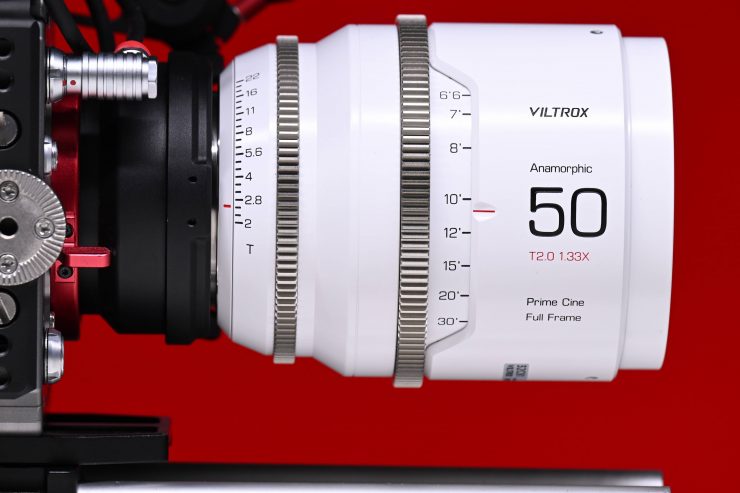
As the old saying goes, just because you can, doesn’t mean you should. Anamorphics aren’t for everyone and they won’t be suitable for a lot of projects. The very nature of their aspect ratio makes them difficult to use for a lot of content you may want to shoot. TV broadcasters often want a native 16:9 aspect ratio as they don’t want to have black bars below and above the image shown on their viewer’s screens. A lot of DPs would love to shoot anamorphic or even in a wider aspect ratio, but this is normally vetoed by the network. Because the anamorphic-scope camera format does not preserve any of the images above and below the scope frame, it may not transfer as well to narrower aspect ratios, like the commonly used 16:9 for full-screen television.
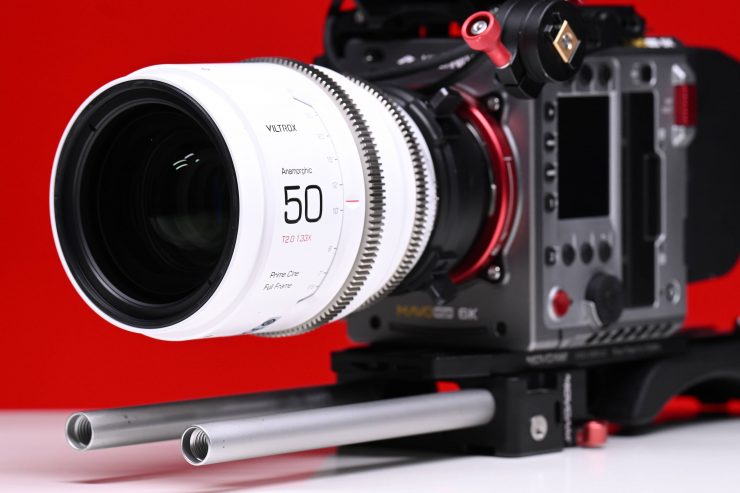
You also need to take into account that the depth of field is also affected when shooting anamorphic-ally. Technically anamorphic and spherical lenses have the same depth of field, but in real-world use, you have to use a longer focal length with an anamorphic in order to achieve the same angle of view. This means at the same magnification (for example using a 35mm focal length), anamorphic lenses produce a shallower depth of field. As we all know, (whether you agree or not) the “cinematic” look is often associated with shallower depth of field.
Reasons for not shooting anamorphic can include:
* Most anamorphic lenses can create artifacts or distortions
* Generally more expensive than a spherical lenses
* A lot of anamorphic lenses are slower than a spherical lens and require more light
* Does not transfer well to narrower aspect ratios, such as 16:9
Size & Weight
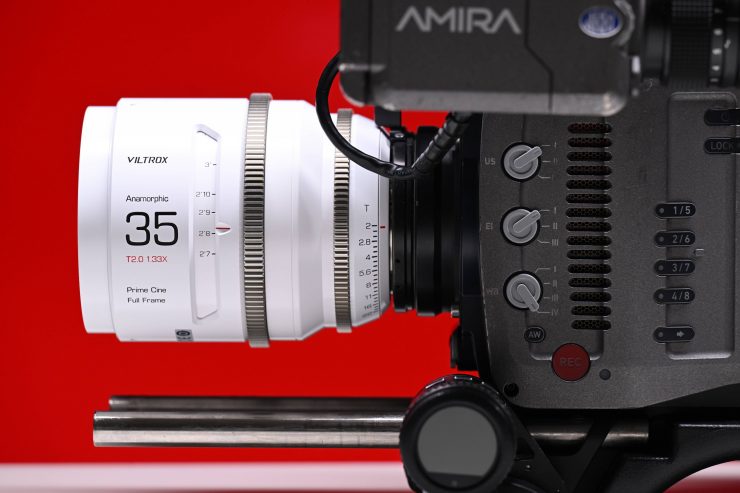
As I previously mentioned, these are not lightweight lenses. The 35mm T2, 50mm T2, and 75mm T2 all weigh 1.98 kg / 4.36 lbs each and they have physical dimensions of Ø102 x 133mm.
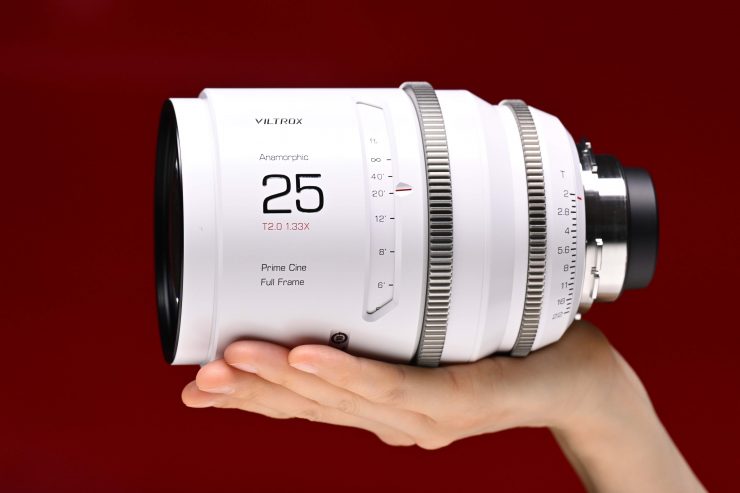
The 25mm T2 weighs 2.02 kg / 4.45 lb and it is 151.6 mm. This makes is slightly heavier and longer than the 35, 50, and 75mm focal lengths, but not by much.
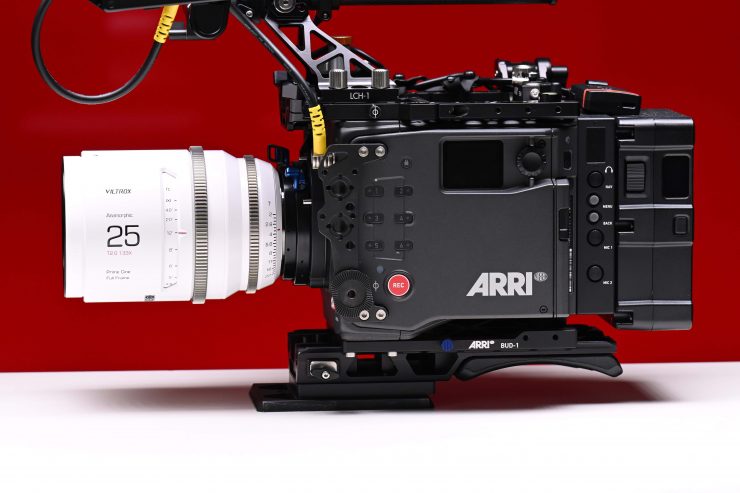
Above you can see how big the 25mm is when mounted on an ARRI ALEXA 35 and a ZCAM E2-F6 Pro.
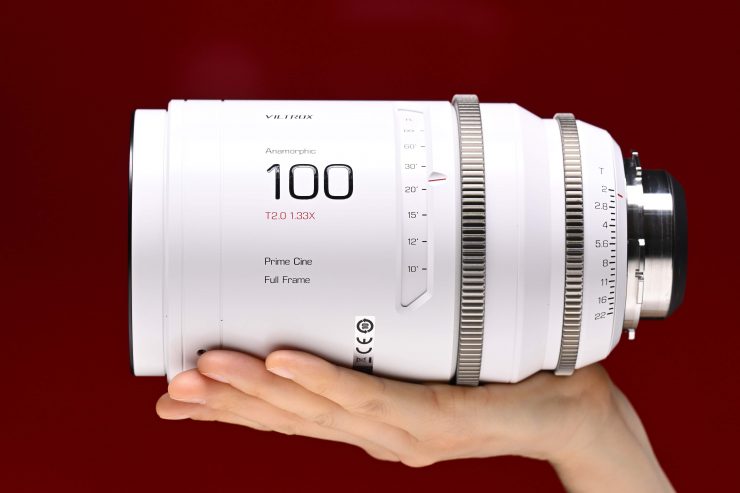
The 100mm T2 is considerably heavier at 2.7 kg / 6 lb and it is 180mm long.
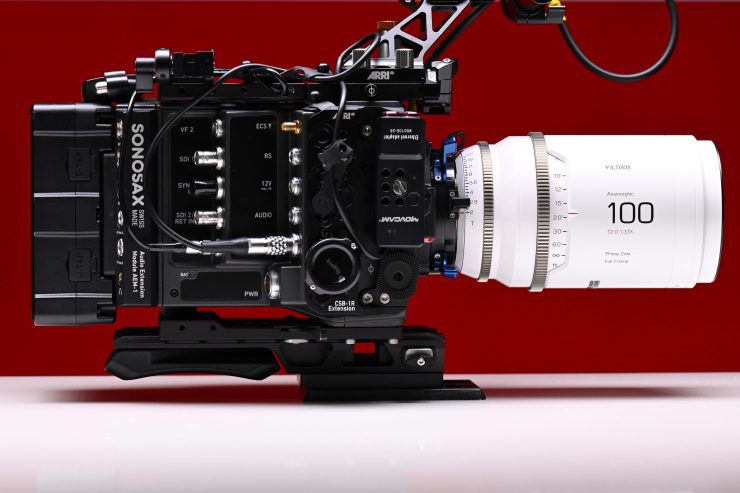
Above you can see how big it is when mounted on an ARRI ALEXA 35 and a ZCAM E2-F6 Pro.
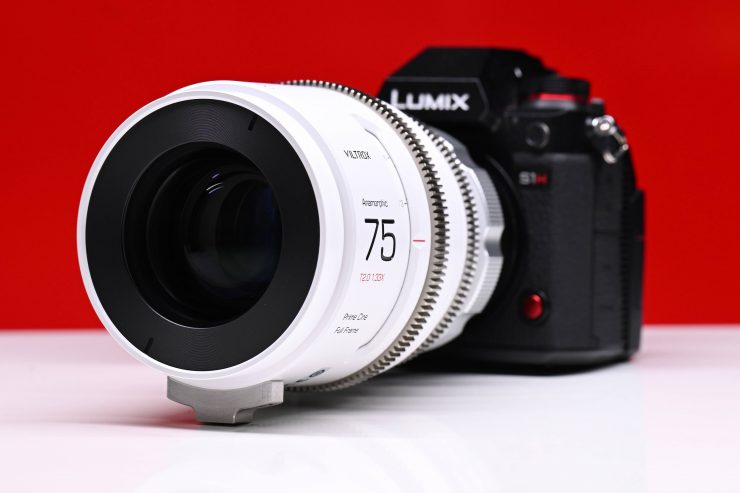
I personally think that these lenses are probably too big and heavy to use with some mirrorless hybrids, especially the 100mm T2.
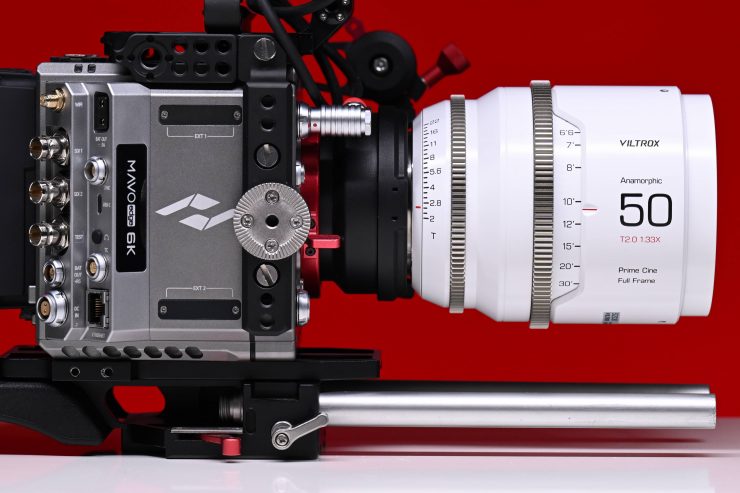
At least, in my opinion, I think the lenses are better suited to use with mid to larger-sized digital cinema cameras.
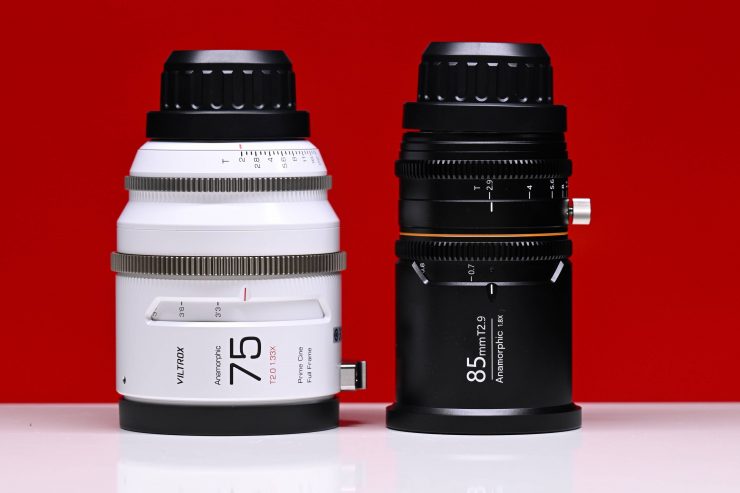
Above you can see a size comparison between the Viltrox 1.33x 75mm T2 and the Great Joy 1.8x 85mm T2.9.
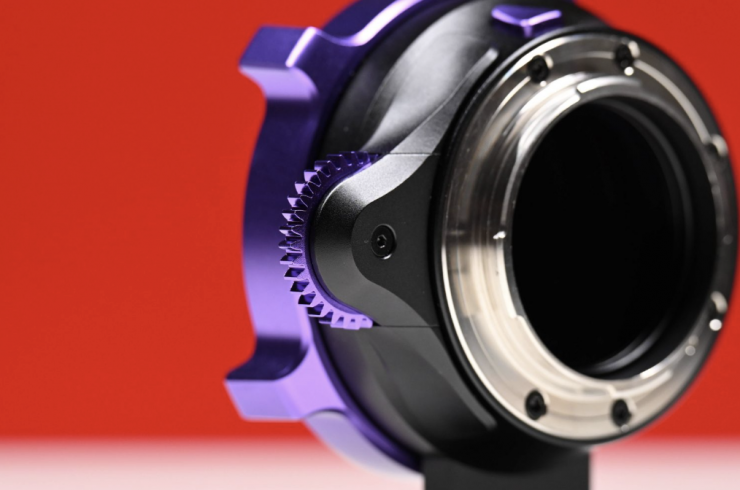
As a side note, the Great Joy and Viltrox 1.33x anamorphic lenses won’t work with the Mofage POCO adapter that I reviewed on the site as their rear elements are too long.
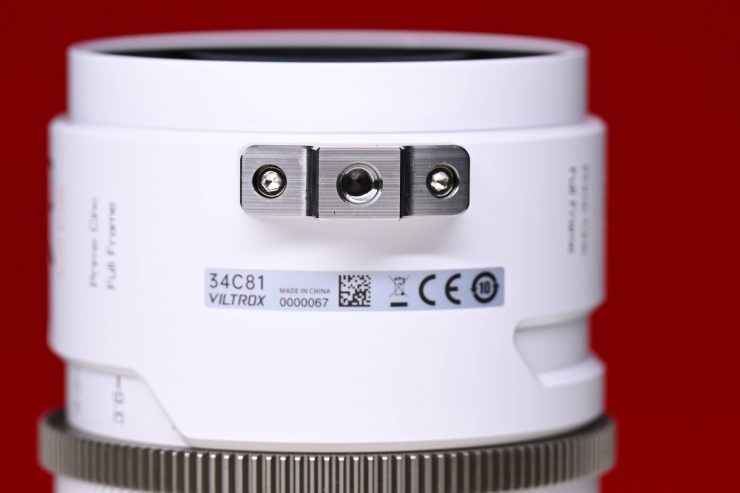
Viltrox does include lens support mounts that you can attach to the lenses.
Build quality
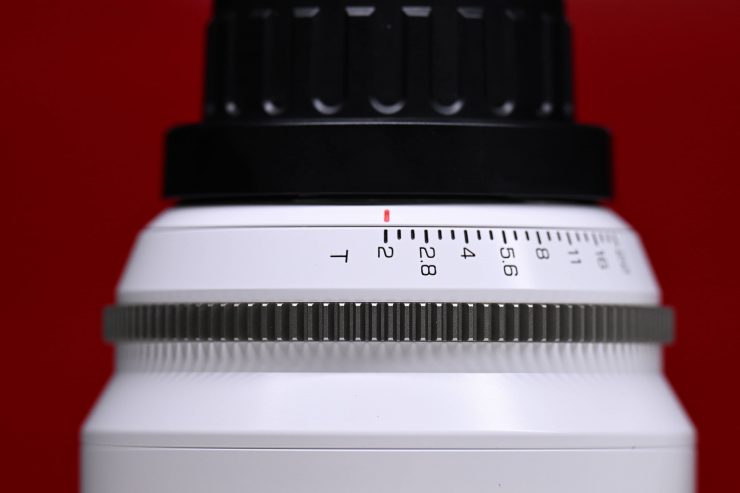
The lenses are robustly made and they certainly have some weight to them. The build quality is excellent across the range and they are a lot better than any of the budget-priced anamorphic lenses that are on the market. They feel like proper high-end cinema lenses when it comes to the construction and feel.

These lenses punch well above their weight when it comes to the overall build quality.
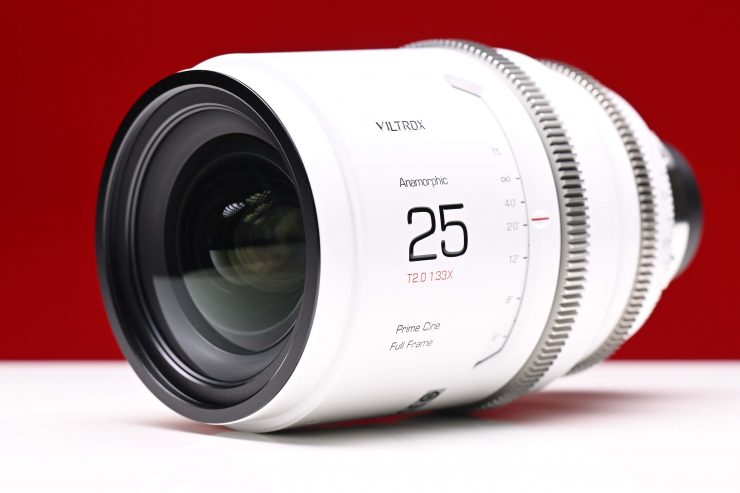
The lenses have focus and iris markings on both sides of the barrel.
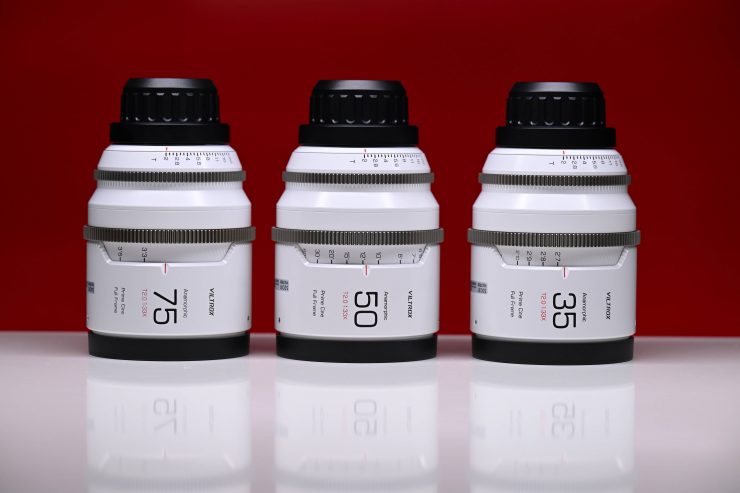
While only three of the lenses are the exact same length, their focus and iris rings are all in the exact same position so this makes changing over lenses when running a follow focus a lot easier.
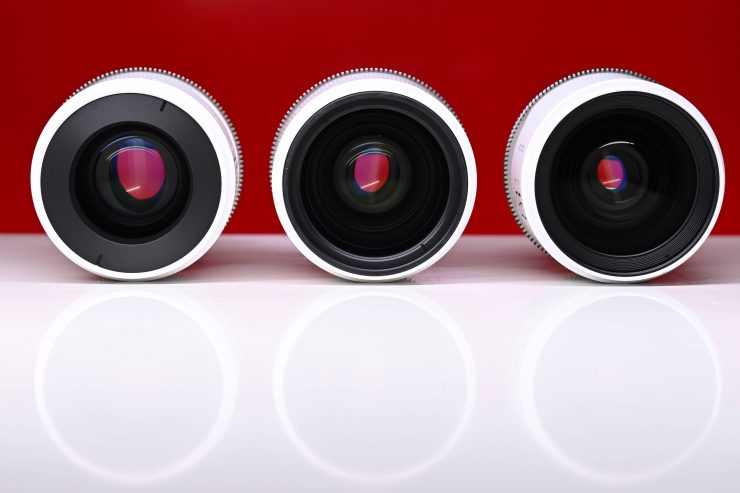
All of the lenses have slightly different-looking front designs.
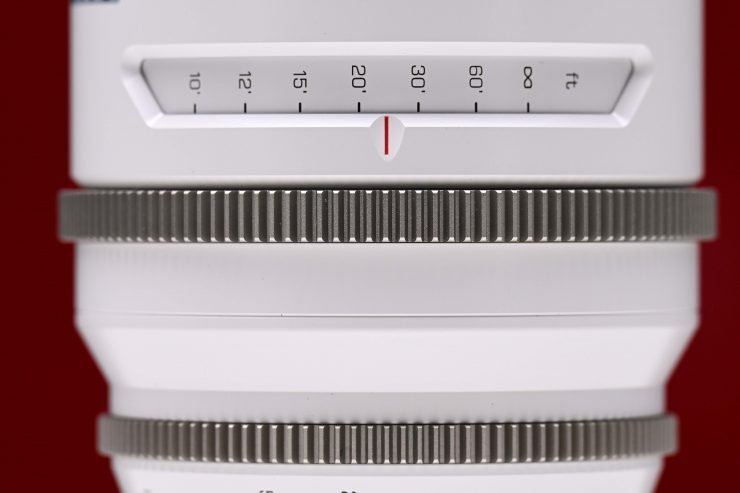
The aperture and focus rings are really well-weighted and have just enough resistance without being too stiff. The lenses have a nice long focus throw 290 degrees) and you really do need to use a follow focus or remote follow focus system if you plan on doing major focus pulls with these lenses. Pulling focus by hand can be done, but I found it difficult to do if you need to go from a close focus distance to out near infinity.
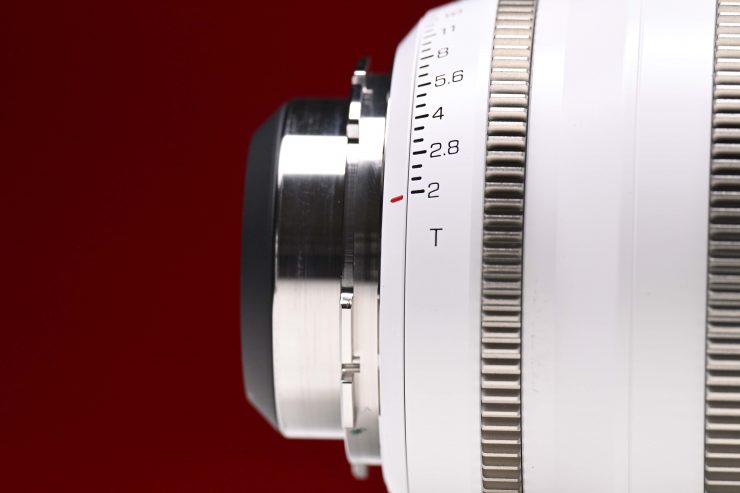
The mounts are well made, although I did have some issues attaching some of the lenses to certain cameras because of their deep rear assembly. This was particularly evident with the 100mm T2.
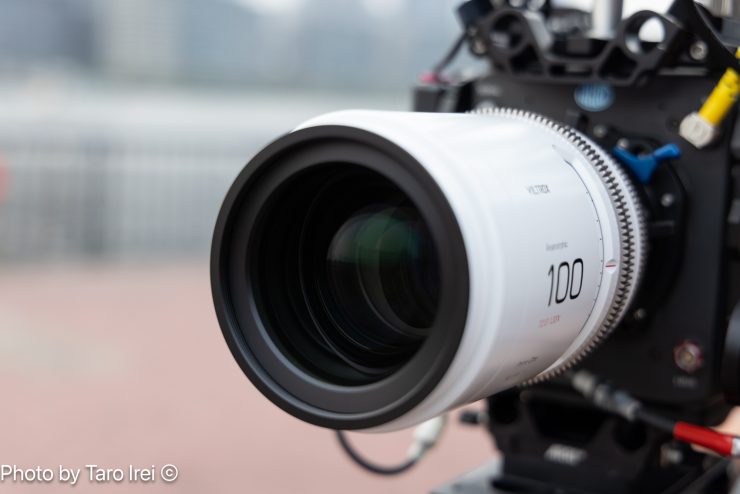
The lenses all have a common 95mm front diameter and they can take 86mm filters. The lenses are only available with imperial markings.
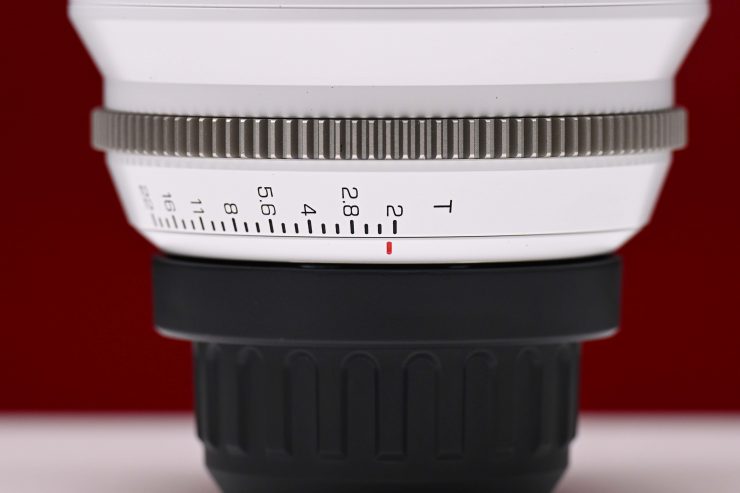
I am not the biggest fan of white lenses, but each to their own.
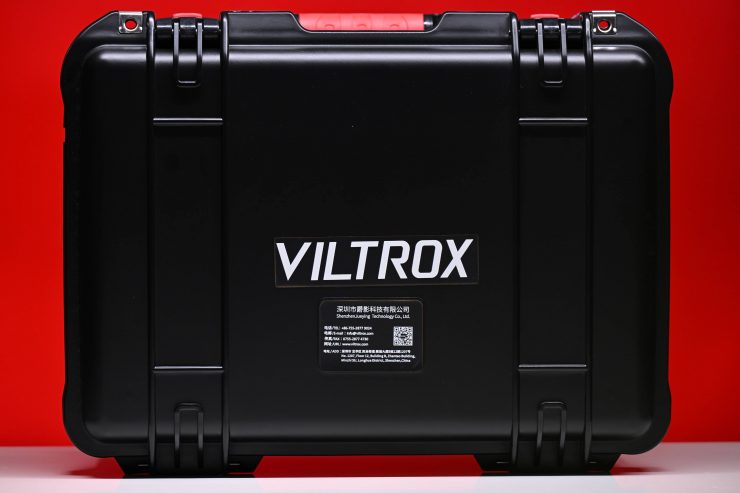
If you buy various kits where you get two, three, or five focal lengths. The lens sets come in a nice hard case that has laser cutouts for the lenses and accessories.
Optical Construction
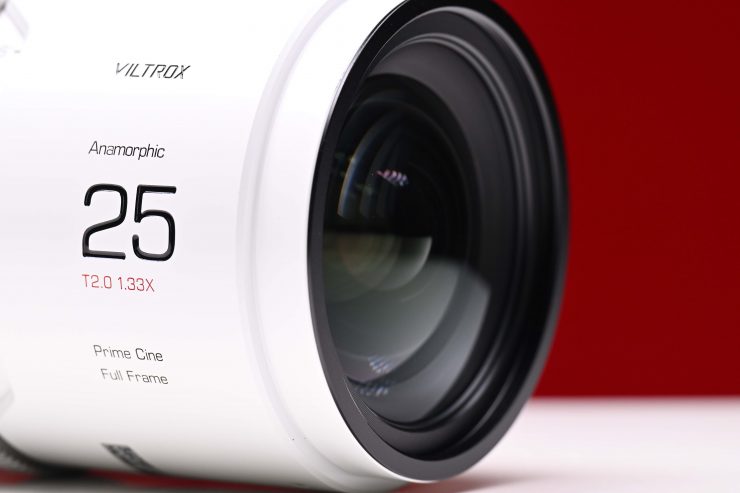
All five focal lengths feature 8 aperture blades. The 25mm has 22 Elements in 18 Groups. The 35mm has 19 lens elements in 13 groups and the 50mm and 75mm have 18 lens elements in 12 groups, and 18 lens elements in 13 groups respectively. The 100mm has 18 Elements in 13 Groups.
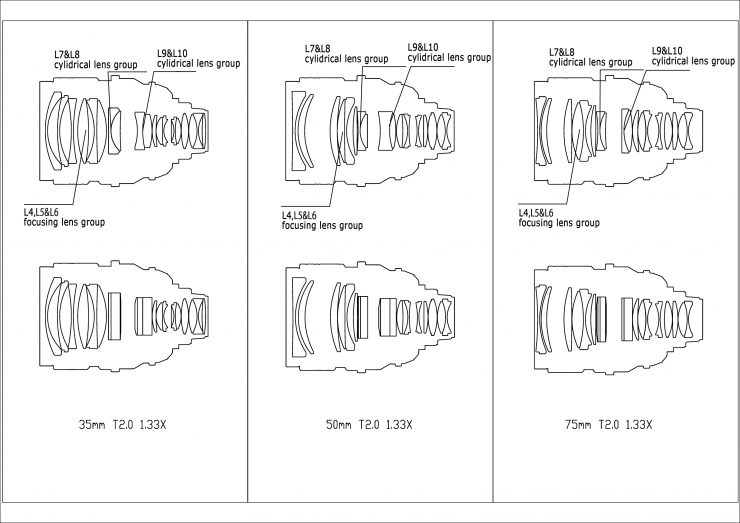
All five lenses feature an anamorphic cylindrical group in the middle of the lens. The lenses feature an HD Nano multi-layer coating and a waterproof anti-fouling coating.
Close focus
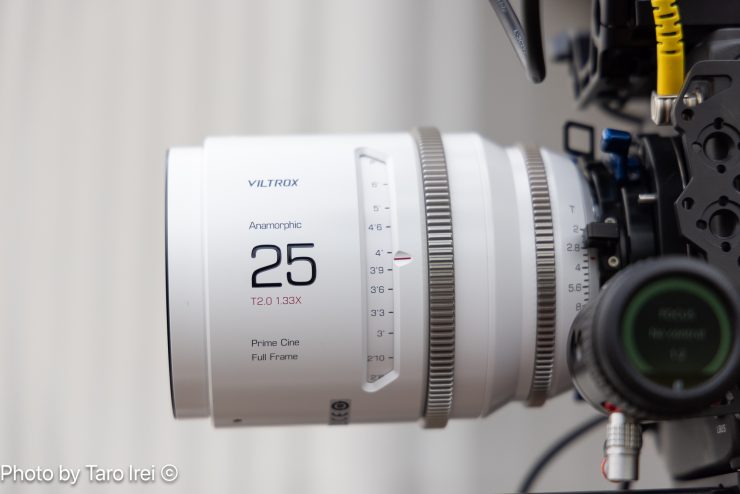
The Viltrox 1.33x 25mm has a minimum focus distance of 1.7′ / 51.8cm which is reasonably close.
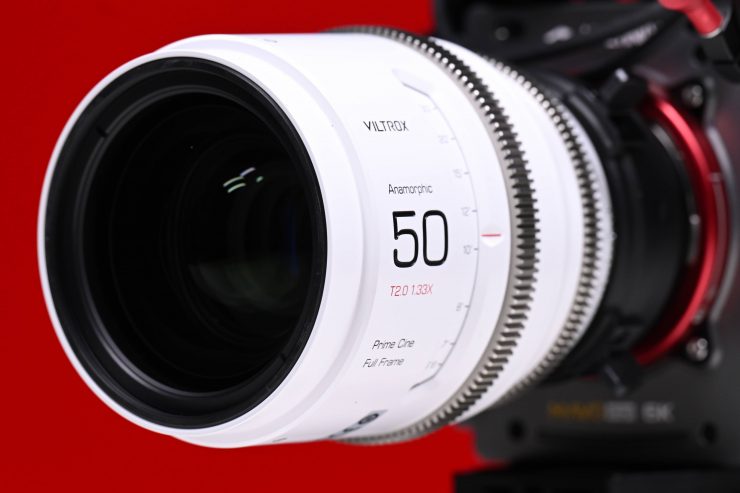
The 35mm and 50mm have a minimum focus distance of 2.7′ / 82.29cm which is pretty good. The 75mm has a close focus distance of 3.25′ / 99cm.
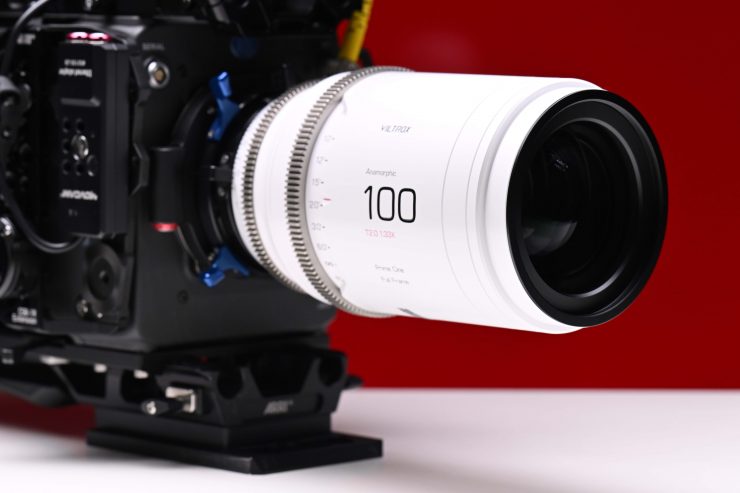
The 100mm T2 has a close focus distance of 2.75′ / 83.8cm, which is actually closer than the 75mm T2.
Back Focus
The lenses do undergo a back focusing procedure at the factory before they are sent out, but because the flange distance varies across different cameras the back focus may need to be adjusted.
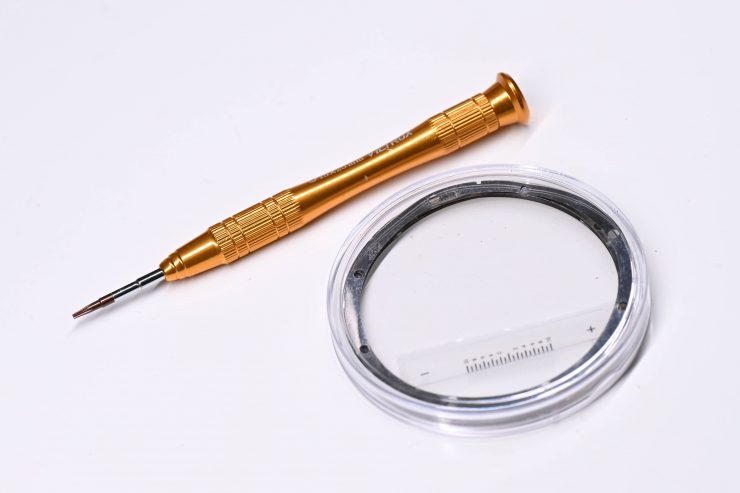
In the kit, Viltrox gives you the tools so you can do this yourself. It is best to use a back focus chart, but if you don’t have access to one, you can download one from the Viltrox website.
When doing back focus adjustment it is always a good idea to set the aperture to its maximum value, in this case, T2. You should then place the camera with the lens attached (in this case the 50mm), 4.6′ away from the chart by measuring the distance from the chart to the sensor plane on your camera.
You can then check the focus. If your lens doesn’t focus at exactly 4.6′ you will need to add shims to correct it. Depending on how far off the back focus is will depend on which shim you need to add.
Viltrox does include detailed instructions in the lens kit and they do include a table that allows you to work out what shims if any, you need to use.
Sharpness
Above you can see sharpness tests for the 25mm T2 and the 100mm T2. Both lenses are little softer at T2, but by the time you hit T2.8 they sharpen up really well. For anamorphic lenses, they are very sharp and they could certainly give a lot of spherical cine primes a run for their money.
The corner and edge sharpness of the 25mm T2 was pretty good and the lens has minimal distortion.
Below you can see sharpness tests for the other focal lengths in the series.
The Viltrox lenses are reasonably sharp, but they are a little soft when shooting wide-open at T2, however, you really need to zoom in a lot to see that softness. Once you start stopping down to T2.8-T4 they do sharpen up. I would say T4 to T5.6 is the sweet spot for sharpness.
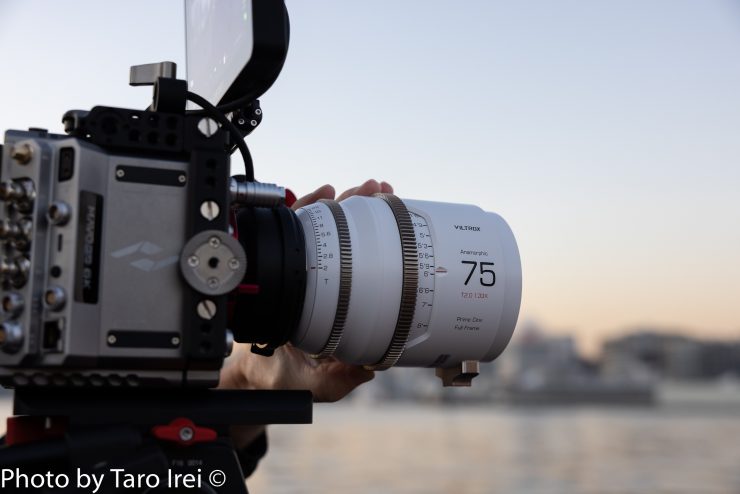
In technical tests, these are probably not lenses that are ever going to win people over, but that’s true of a lot of anamorphic lenses. Technical tests are more unforgiving than a lot of real-world shooting situations and they are done to look very closely at potential optical flaws.
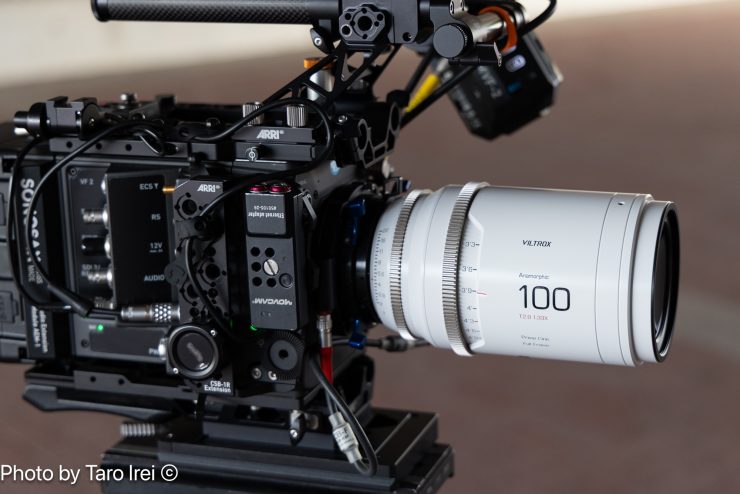
In the real world, most lenses are going to look a lot better than they will in technical tests. The reason I do tests like this is it gives you a benchmark when comparing other lenses. The robot has a very fine pattern on its surface and this is very helpful in seeing sharpness and detail.
Lens Breathing
Above you can see lens breathing tests for the 25mm T2 and the 100mm T2. I did these tests by hand, so please excuse the image shake on some of the shots.
The 25mm T2 has very little breathing and even on the 100mm it is very well controlled for an anamorphic lens.
I tested out the lenses by doing large focus throws and there is a small amount of breathing when using the lenses wide open, but for anamorphic lenses at this price, it is very well controlled. If you stop down to T5.6 the breathing is almost nonexistent.
Anamorphic breathing appears in a different way than when using a normal spherical lens. With a spherical lens, breathing gives the appearance that the focal length is changing. However, with anamorphic lenses, vertical stretching occurs with the background. So when you adjust focus from something close to something further away, the background takes on a squeezed appearance. Hence why you see oval instead of round bokeh.
With anamorphic lenses, the more you stop the lens down, the less the out-of-focus object’s appearance will change. If you shoot wide open and pull focus the out-of-focus objects will change shape more dramatically.
Older anamorphic lenses such as Lomo’s and Kowa’s can breathe a lot. Newer anamorphic designs from companies such as Zeiss and Cooke have a lot less breathing. The popular Panavision E Series anamorphic lenses retain true anamorphic artifacts such as disproportional vertical focus breathing.
Flare
Above you can see the lens flare for the 25mm T2 and 100mm T2. Please note that the Kinefinity camera I was using tends to overly saturate blue light sources.
Let’s face it, the reason a lot of people want to use anamorphic lenses is because of the interesting flares you can obtain. Yes, they can be overly used, and sometimes less is more, but the probable target audience for these lenses is arguably looking for prominent streaks.
Used wide open, or relatively wide open, you do get that streak that everyone is familiar with. Whether you prefer the blue streak or a more neutral steak is again a personal thing. I personally found the blue streaks were a little overpowering for my tastes. They are very strong and pronounced and not soft or subtle. I would personally probably use these lenses in combination with something like glimmer glass to soften the streaks.
I would have preferred to have seen Viltrox make the lenses with a more neutral streak that takes on the appearance of the lighting source you are shooting. The strong blue streak might be fine if you are shooting a Sc-Fi movie, but it can be very distracting for a lot of other content. Sometimes less is more.
Out of the five focal lengths I actually preferred the flare I was getting on the 75mm T2, but again, flare is a very personal thing.
The lenses maintain reasonably good contrast when a lot of direct light is shining down the barrel.
Chromatic Aberration
The lenses didn’t exhibit any strong signs of chromatic aberration. There is some chromatic aberration that you can see in the real world, but the lack of it is impressive for an anamorphic lens.
Bokeh
Oval-shaped bokeh is another drawcard of anamorphic lenses. The ability to create interesting-looking out-of-focus areas can certainly be used to help to enhance a shot.
The bokeh is very nice for 1.33x lenses with a T2 aperture. The bokeh has more of a oval appearance than you would perhaps expect for a 1.33x squeeze anamorphic.
Real World Use
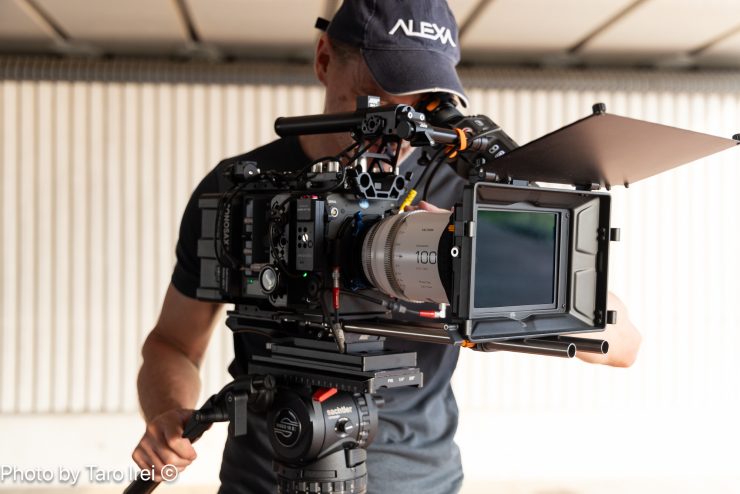
I took the lenses out and shot some footage so that you could see the general look and characteristics of the lenses. Now, it was a very flat and overcast day and there wasn’t much sun. When doing lens tests I have particular goals in mind. There is no point just going out to try and shoot pretty pictures. With a lens test I want to specifically see real world sharpness, how the focus falls off, bokeh, lens breathing, chromatic aberration, and how it copes in highly contrasty and difficult lighting conditions.
Hopefully you should still be able to see the lens’s character and optical performance based on some of these test shots. Both the 25mm and 100mm looked really nice and they are sharp for anamorphic lenses. The 25mm has minimal distortion which was nice to see. I found the bokeh of both lenses to be really nice, although this is subjective. The lack of real world focus breathing was also impressive. There is some slight chromatic aberration, but it is well controlled.
Above you can see test footage from the 35mm, 50mm and 75mm T2 lenses that I previously shot.
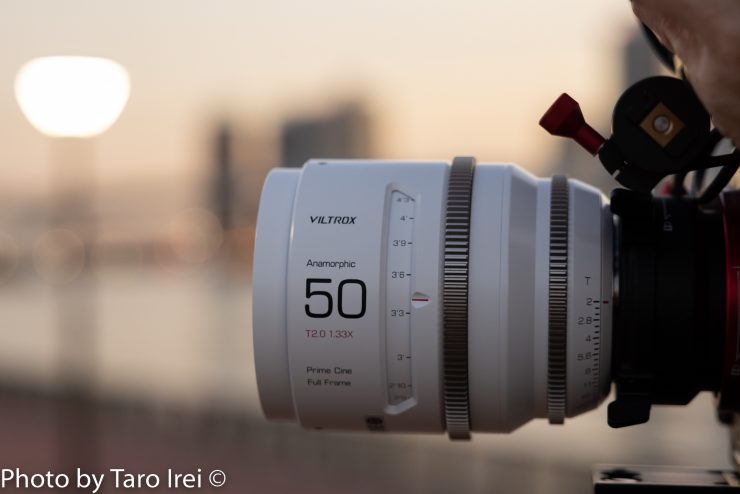
I enjoyed using the lenses and I liked the images I was getting from them. They have character without being over the top and they have a nice amount of sharpness and pleasing bokeh.
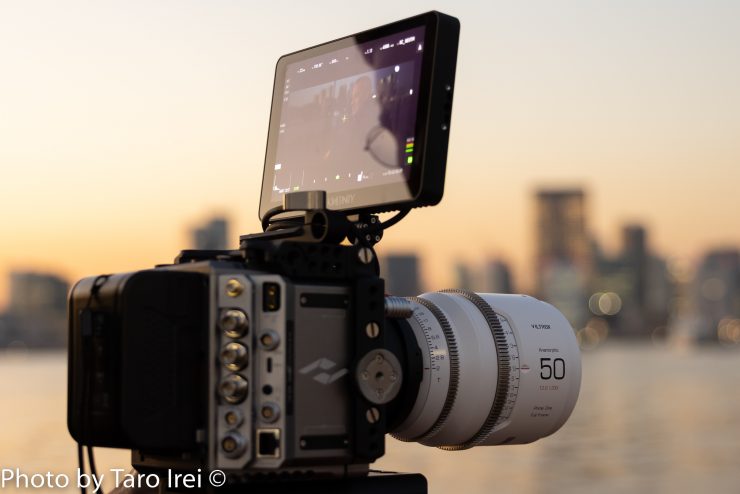
I did find that the illumination out towards the edges of the frame is certainly darker than the center. You do also get a double streak when direct light is hitting the lens. Whether you like this or not is a very personal thing.
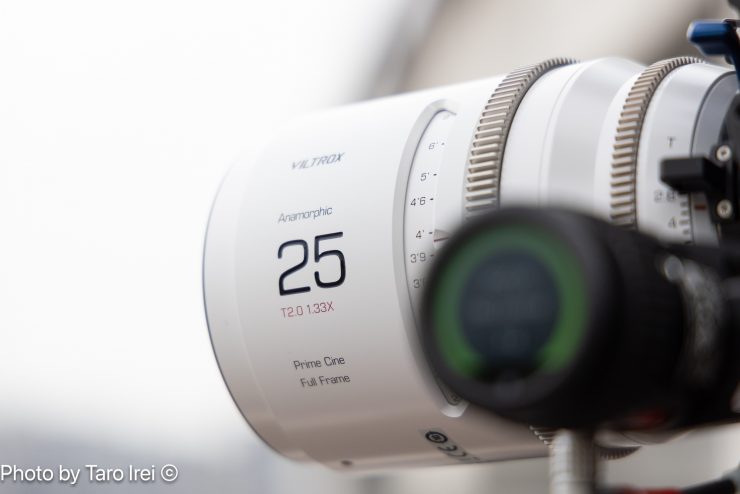
The Viltrox lenses surprised me because, in all honesty, I wasn’t sure what to expect from a company that hasn’t made dedicated cine lenses before. As the old adage goes, you should never judge a book by its cover.
Distortion
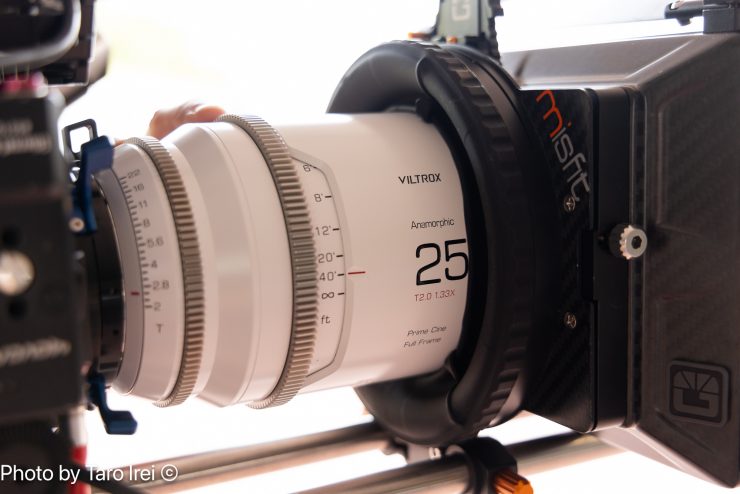
A lot of wider anamorphic lenses tend to suffer from pretty bad edge distortion, but because the Viltrox is only 1.33x, the distortion is very well controlled. Even out on the edges of frame, I wasn’t seeing warped lines. In saying that, the lenses do exhibit some pin cushion distortion, but I didn’t find it to be overly distracting or that noticeable in the real world. I was very impressed with the lack of distortion when using the 25mm T2. Viltrox has done an outstanding job with this lens.
Do they match?
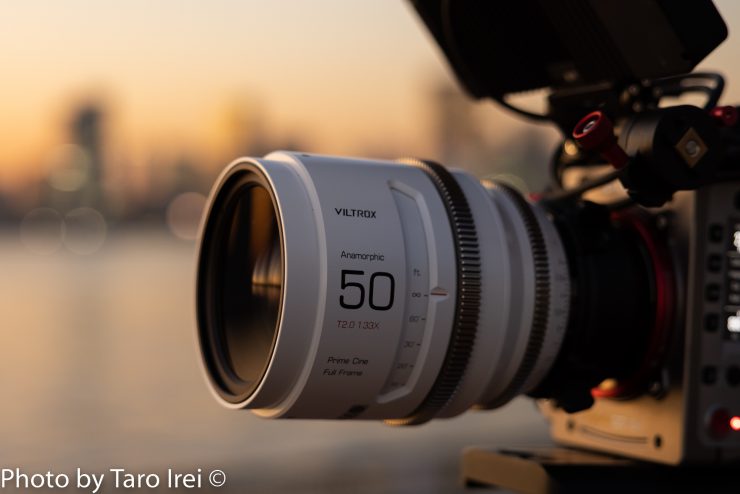
With some of the ‘affordable’ anamorphic lenses on the market, the look and build quality between focal lengths can vary quite dramatically. It was nice to see that the build quality and general look of all five lenses remain consistent with the Viltrox. If you are going to buy a set of lenses, you want them to match as closely as possible.
Can you get wide enough?
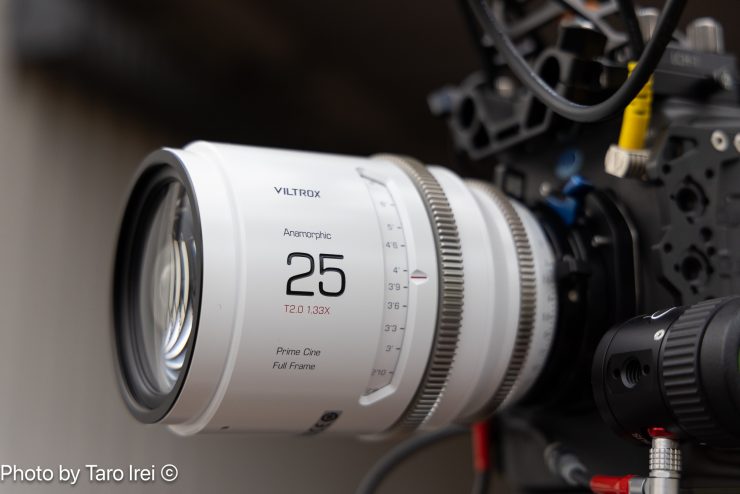
With the widest focal length being 25mm, you may well be asking, is that wide enough? A 35mm 1.33x anamorphic lens has the equivalent field of view of a 18.79mm lens. What you do need to remember is that you are getting a 18.79mm horizontal field of view, but you are losing information vertically. Wide angle anamorphic lenses of less than 40 mm focal length produce a cylindrical-perspective which some people like, and others hate.
It really depends on whether or not you are using the lens on a full-frame camera or S35. On a full-frame camera, the 25mm is pretty wide.
1.3x on the ARRI Amira
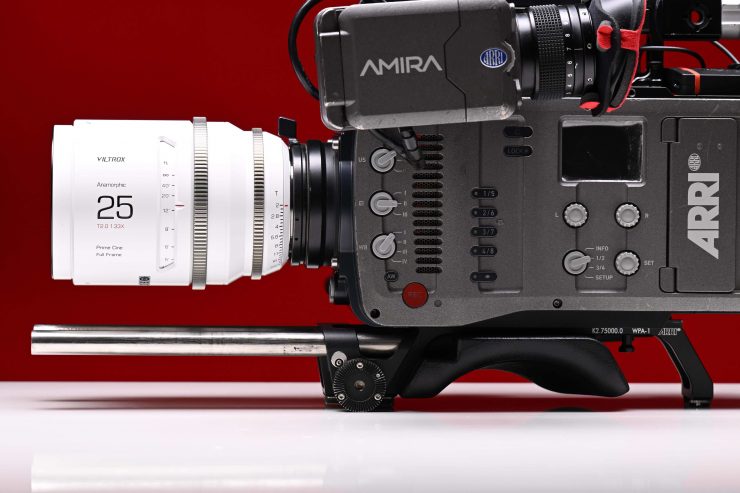
The Arri Amira has the ability to do 1.3x anamorphic de-squeeze which will work well with the 16:9 sensor so you can create a 2.39:1 aspect ratio. The nice thing about this mode on the ARRI is that it actually records the image in the correct aspect ratio in camera, so you don’t have to do anything to it once you start to edit.
Plain Jane
If you do find the Viltrox EPIC series to be a little too clean and lacking character, V35 Project in the US is doing a conversion to try and get them to more closely replicate the look of the Hawk V-Lite Vintage 74 1.3x set.
This modification isn’t on the affordable side of things as each lens costs $4,000 USD to modify.
Price
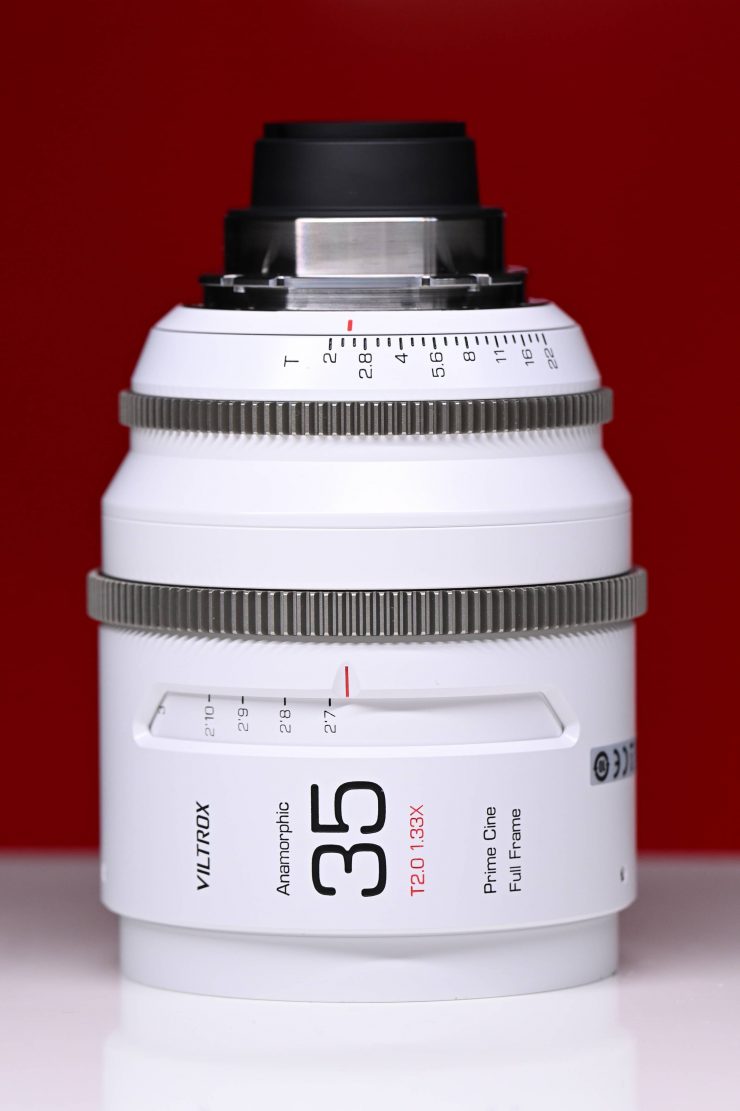
The Viltrox 1.33x Full Frame anamorphic lenses are priced at between $3,299 USD and $3,999 USD each (PL mount). The 25mm T2 is $3,999 USD, as is the 100mm T2.
You can also buy the 3-lens set (35, 50 & 75mm) for $9,600 USD or 5-lens set (25, 35, 50, 75 & 100mm) for $17,299 USD. If you already own the 35,50, and 75mm T2 set you can buy the 25mm and 100mm in a 2-lens set for $7,759 USD.
How do these prices compare to some of the more affordable full-frame and S35 anamorphic lenses that are available?
Below you can see:
BLAZER LENS
- BLAZAR LENS Great Joy 35mm T2.9 1.8x Anamorphic Lens (PL + EF Mount) $1,399.20 USD
- BLAZAR LENS Great Joy 50mm T2.9 1.8x Anamorphic Lens (PL + EF-Mounts) $1,199 USD
- BLAZAR LENS Great Joy 85mm T2.9 1.8x Anamorphic Lens (PL + EF Mounts $1,399.20 USD
- BLAZAR LENS Great Joy 35, 50 & 85mm T2.9 1.8x Anamorphic 3-Lens Kit (PL + EF Mounts) $3,557 USD
- BLAZAR LENS Remus 35mm T1.6 S35 1.5x Anamorphic Lens (ARRI PL) $799 USD
- BLAZAR LENS Remus 45mm T2.0 1.5x Anamorphic Lens (ARRI PL) $949 USD
- BLAZAR LENS Remus 65mm T2.0 Full-Frame 1.5x Anamorphic Lens (ARRI PL) $949 USD
- BLAZAR LENS Remus 100mm T2.8 Full-Frame 1.5x Anamorphic Lens (ARRI PL) $949 USD
- BLAZAR LENS Remus 45/65/100mm T2.0 Full-Frame 1.5x Anamorphic 3-Lens Kit with Case (ARRI PL) $2,599 USD
SLR MAGIC
- SLR Magic 70mm 1.33x Anamorphot-CINE Lens (PL Mount) $4,499 USD
- SLR Magic 35mm 1.33x Anamorphot-CINE Lens (PL Mount) $3,999 USD
- SLR Magic 50mm 1.33x Anamorphot-CINE Lens (PL Mount) $4,499 USD
- SLR Magic 1.33x Anamorphot-CINE Lens Set with 35, 50, 70mm Lenses (PL Mount) $8,999 USD
- SLR Magic 1.33x Anamorphot-CINE Lens Set and EF-Mount Adapter Kit $9,698 USD
VAZEN
- Vazen 50mm T2.1 1.8x Full-Frame Anamorphic Lens (Interchangeable PL/EF) $6,000 USD
- Vazen 85mm T2.8 1.8x Full-Frame Anamorphic Lens (PL/EF-Mount) $6,000 USD
- Vazen 135mm T2.8 1.8x FF Anamorphic Lens (PL/EF) $6,000 USD
- Vazen Full Frame 1.8x Anamorphic Lens Set with Hard Case (50/85/135mm, PL/EF) $15,000 USD
- Vazen 28, 40 & 65mm Anamorphic Lens Set with Case (RF/MTF Mount, Amber Flare) $9,500 USD
SIRUI
- Sirui 50mm T2.9 Full Frame 1.6x Anamorphic Lens (Sony E) $1,199.20 USD
- Sirui 35mm T2.9 1.6x Full-Frame Anamorphic Lens (Sony E) $1,199.20 USD
- Sirui 75mm T2.9 Full Frame 1.6x Anamorphic Lens (Sony E) $1,199.20 USD
- Sirui 100mm T2.9 1.6x Full-Frame Anamorphic Lens (E-Mount) $1,199.20 USD
- Sirui T2.9 1.6x Full-Frame Anamorphic 4-Lens Set (35/50/75/100mm, E-Mount) $5,196 USD
- Sirui 35mm f/1.8 Super35 Anamorphic 1.33x Lens (RF Mount) $449 USD
- Sirui 24mm f/2.8 Anamorphic 1.33x Lens (E Mount) $499 USD
What you need to clearly remember with the SIRUI options is that they only cover S35 sensors and they aren’t available in PL mount.
LAOWA
Conclusion
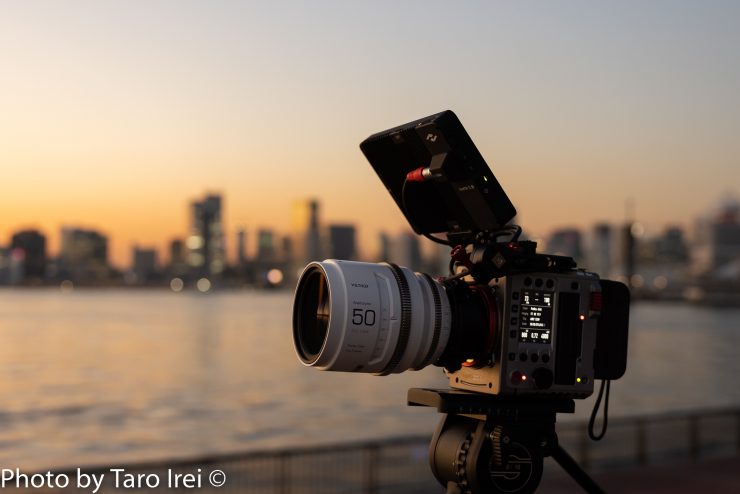
The Viltrox 1.33x full frame anamorphic lenses offer a great balance of build quality and optical performance. There really aren’t many 1.33x anamorphic lenses to choose from and they really do fill a niche place in the market. The ability to use them on regular 16:9 sensor cameras is a big deal and in some ways, it makes them a little bit more versatile than 1.5x, 1.8x or 2x anamorphic lenses.
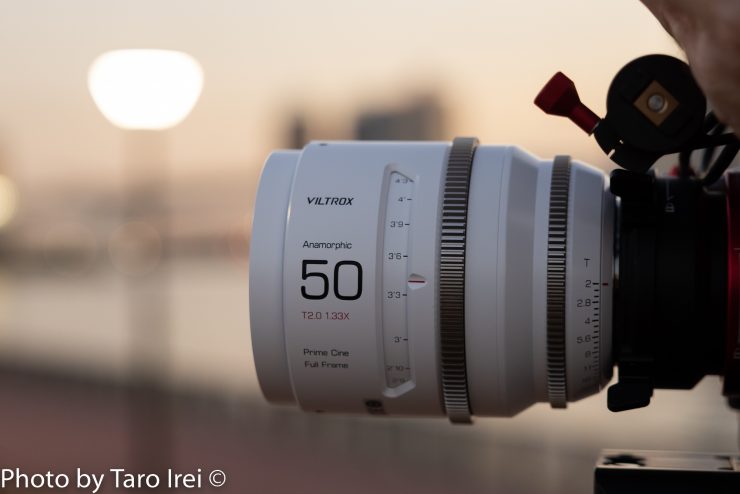
Whether or not buying a 1.33x lens makes sense if you want to shoot anamorphic is bound to draw strong opinions from different people. With quite a few 1.5/1.8/2x options now available, 1.33x is potentially going to be a hard sell.
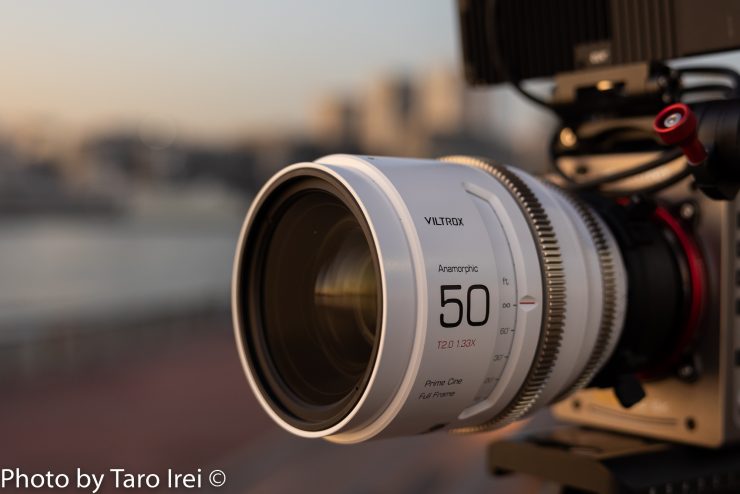
The lenses have very little distortion, low amounts of chromatic aberration, and the breathing is very well controlled. They retain a good amount of contrast and their color tone is quite neutral. I did find that the blue streaks were a bit too harsh for my liking, but they are more pleasing than the streaks you get on the Laowa and Sirui anamorphic lenses. I personally would have preferred a neutral streak color instead of blue.
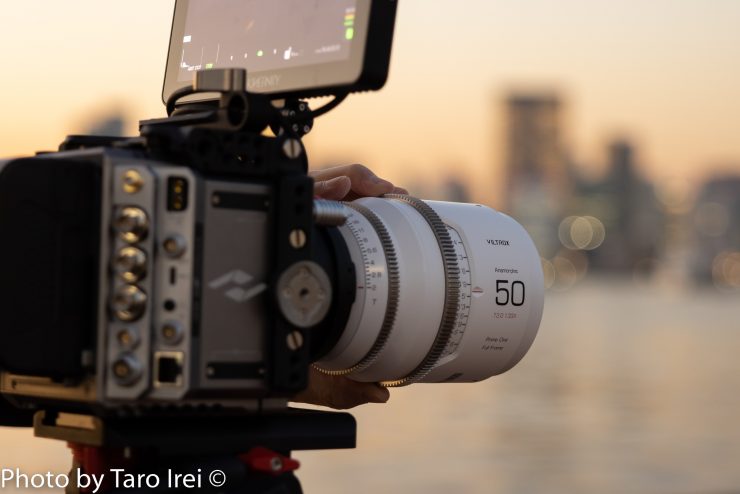
The lenses are very solidly made and constructed and the build quality is right up there with some of the best cine primes on the market. At their price point and given their optical performance they do an excellent job. They do, however, face very stiff competition from a bevy of affordable anamorphic lenses that have started to flood the market in the last year or so.
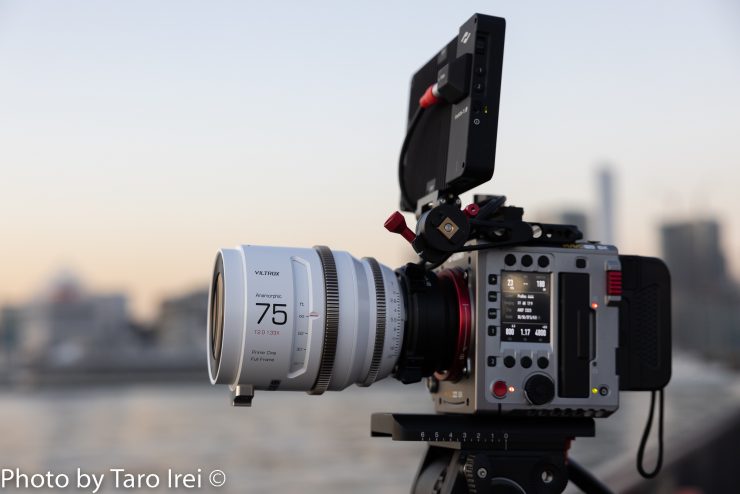
If you are an owner/operator and are looking to own a set of well made, clean, and reasonably affordable anamorphic lenses that you could use on just about any camera then the Viltrox is worth considering.
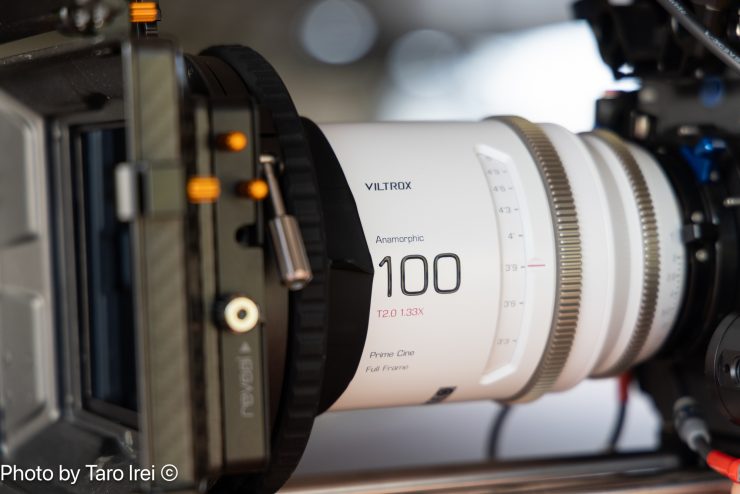
Yes, they do have a cleaner look that a lot of the other anamorphic options on the market, but you can use filters or do things in post to change that if you want.
While they certainly aren’t going to be lenses for everyone, they may be a good option for rental houses due to their build quality.
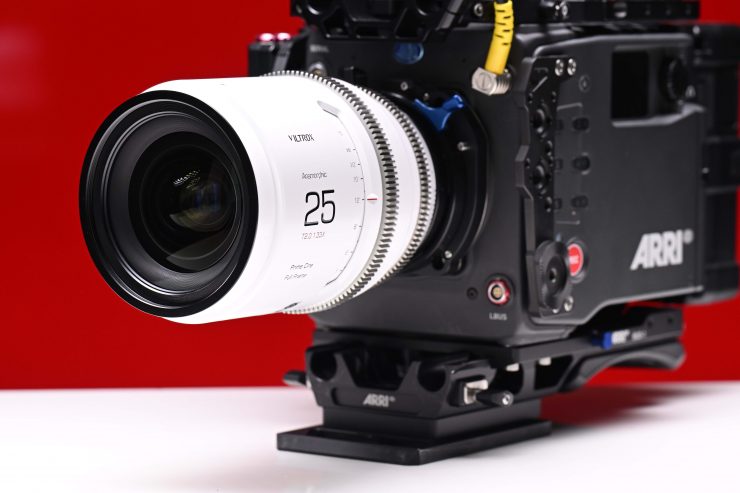
I really liked using the Viltrox 1.33x Full Frame Anamorphic lenses as they were easy to operate and they create nice images, and the addition of the 25mm and 100mm makes for a much more rounded set. These lenses certainly punch well above their weight.

